When we remember the names and hateful words of segregationist leaders, we better understand the nationwide campaign to reject racial equality and maintain white supremacy, which has lasting effects today.
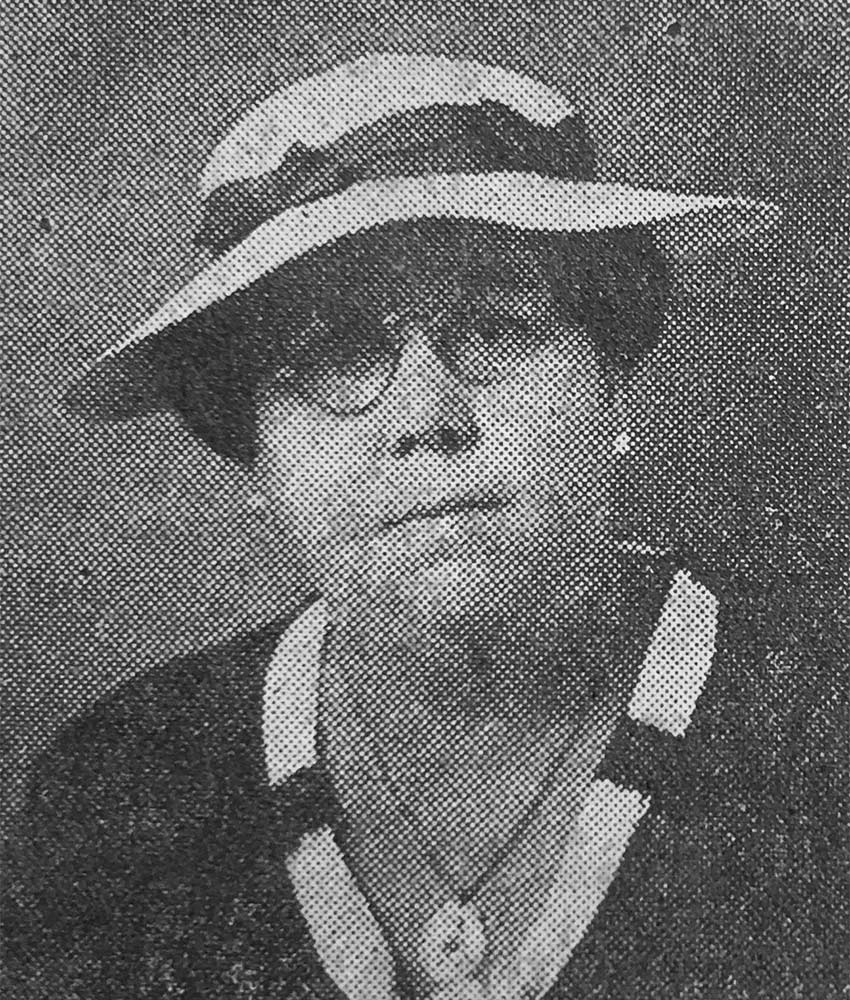
Mrs. J.E. Andrews
President, Women’s National Association for the Preservation of the White Race - Georgia
All we need to do is insist that the Negro get back in line.
Mrs. J.E. Andrews served as president of the Women’s National Association for the Preservation of the White Race, an organization that promoted white supremacist propaganda in the early 1930s. Andrews was an especially vocal critic of anti-lynching activism and she accused the NAACP of being dedicated to promoting the ruin of the “pure white race.” She published a pamphlet advocating the need for a militia to protect whites. In a confrontation with the Association of Southern Women for the Prevention of Lynching, a white organization, Andrews distinguished her group as “an organization of white mothers [that] has arisen to defend our girls, both against Negro men and you.” Georgia Women’s World, which her organization published in the 1930s, featured sensationalized messages, such as “White People! We again beg you to wake up before your heritage and your race are obliterated.”
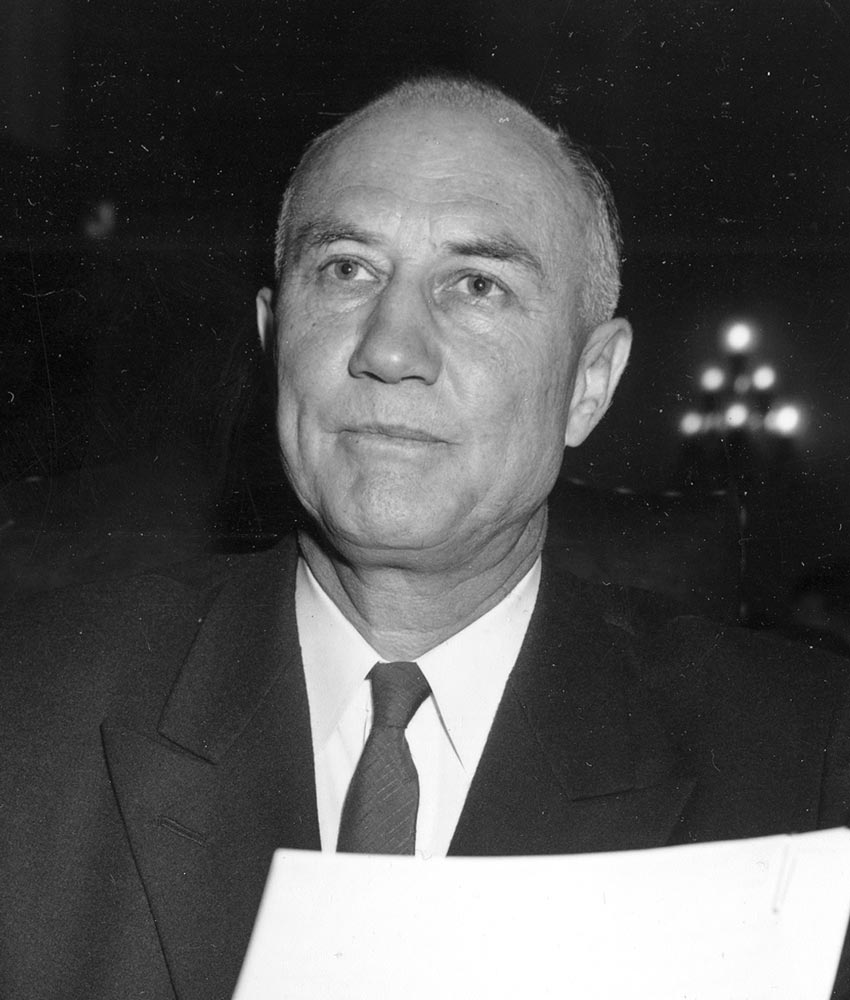
Strom Thurmond
(1902-2003) U.S. Senator - South Carolina
[A]ll the laws of Washington and all the bayonets of the Army cannot force the Negro into our homes, into our schools, our churches and our places of recreation and amusement.
Strom Thurmond was a prominent South Carolina politician and vocal segregationist. While governor of South Carolina, he led the Dixiecrat ticket in 1948 as the pro-segregationist presidential candidate; he won significant support in the South but lost the election. In 1954, Thurmond was elected to the Senate, where he grew in national influence as a leading opponent of civil rights. In 1956, he was a primary drafter of the Southern Manifesto, which denounced the Supreme Court’s 1954 decision in Brown v. Board of Education and encouraged Southern states to prevent public school integration.
A staunch opponent of civil rights legislation, Thurmond famously staged a 24-hour filibuster to prevent passage of the Civil Rights Act of 1957. He also opposed the Voting Rights Act of 1964 and its reauthorization in 1975. Thurmond served 48 years in the Senate and died in 2003 at the age of 100. He never publicly renounced his segregationist views.
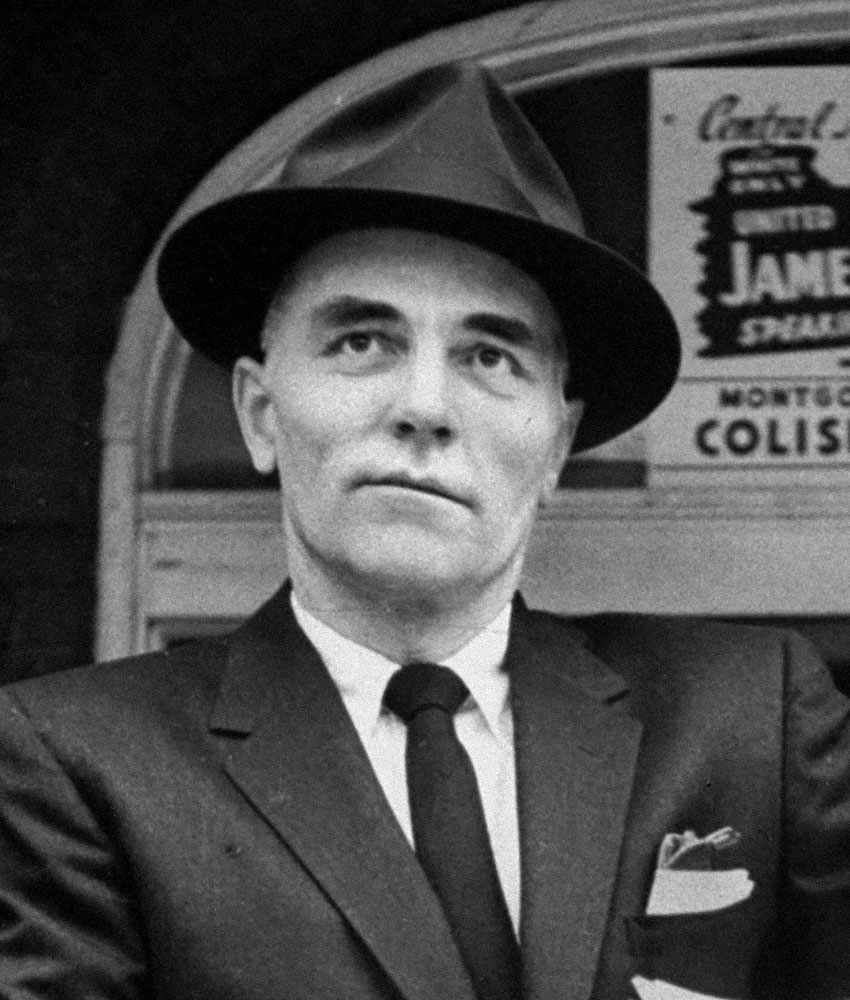
Sam Engelhardt
(1912-1991) State Senator, State Highway Director - Alabama
I have worked Negroes on the plantation for years and have never had a bit of trouble with any of them. I know what is best for them... Our sole purpose is to maintain segregation. That’s what we intend to do.
State Senator Sam Engelhardt was the principal architect of the Alabama Legislature’s strategy to defy desegregation, and he served as the Executive Secretary of the Citizens’ Councils of Alabama. His home district of Macon County was 85 percent African American -- the largest percentage of any county in the country -- and Engelhardt was terrified by the prospect of Black voters controlling the county. His state senate campaign cards read, “I STAND FOR WHITE SUPREMACY SEGREGATION.” Engelhardt proposed a bill in the Alabama Senate to redraw Tuskegee’s city limits to exclude nearly all Black residents, and later suggested eliminating the majority-Black county by dividing Macon County among its neighboring counties. Engelhardt served as Alabama’s State Highway Director from 1959 to 1963, and he oversaw the construction of interstate highway projects that destroyed Black communities.
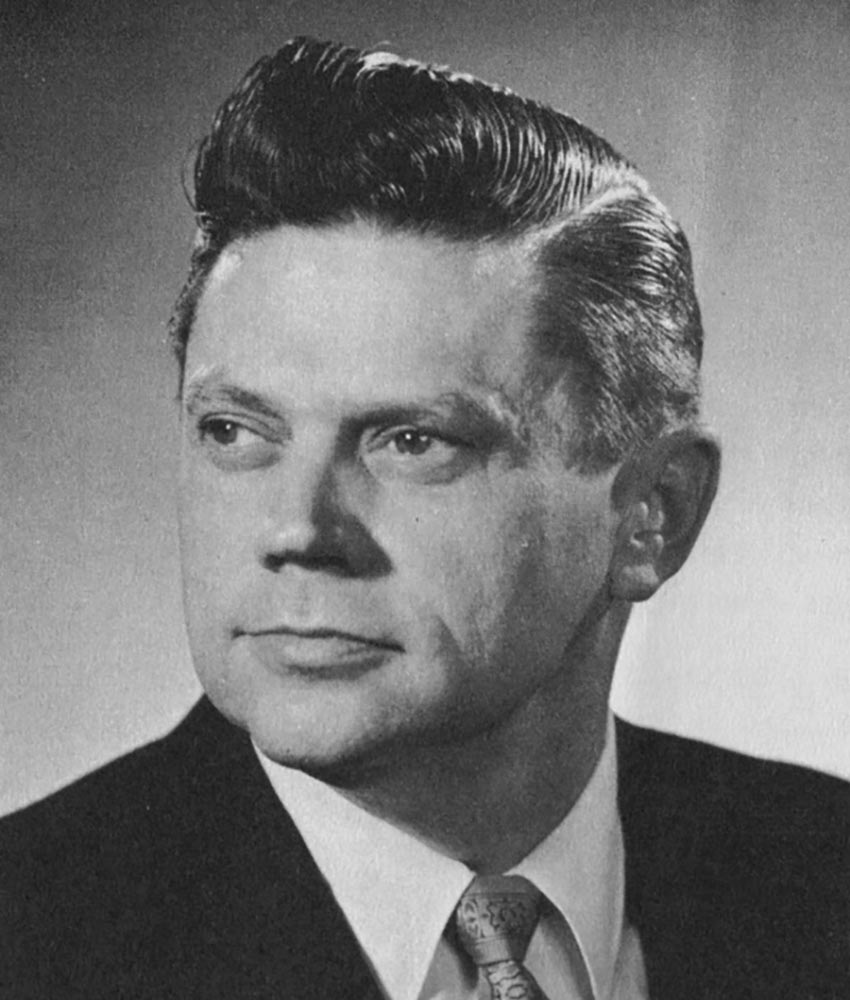
William Rainach
(1913-1978) State Legislator - Louisiana
I do not believe the two societies should mix.
Widely regarded as one of the most virulent opponents of civil rights in the Louisiana State Legislature, William “Willie” Rainach, whose tenure lasted from 1940 to 1960, stridently opposed Brown and fought to delay its implementation. While Rainach was chair of the Joint Legislative Committee to Maintain Segregation, the legislature directed the state board of education to nullify graduation certificates from any integrated public school, withheld books and lunches from integrated schools, and criminalized all efforts to violate segregation laws.
In Rainach’s words, “A vote against these bills is an open invitation to the carpetbaggers, scalawags, and National Association for the Advancement of the [sic] Colored People to integrate our schools.” In 1958, Rainach and other leaders of the White Citizens’ Council mounted a campaign to systematically disenfranchise thousands of Black voters by requiring literacy tests and targeting the credentials of Black registrants for scrutiny. These tactics reduced the Black electorate by 85 percent in Washington Parish and 75 percent in Ouachita Parish -- until litigation by the Justice Department restored some 1400 voters to the rolls.

Virginia Johnson
(1928-2007) Politician - Arkansas
I’m a segregationist. Aren’t we all?
Virginia Johnson was an Arkansas politician and the wife of Arkansas Supreme Court Justice Jim Johnson. As a member of the staff of the Arkansas State Senate from 1951 to 1953, Johnson promoted her husband’s ballot initiative to amend the state constitution to require the Arkansas Legislature to defy Brown “in every constitutional manner.” The campaign succeeded and the amendment remained in the state constitution until it was repealed in 1990. Johnson supported segregation throughout her career. She ran for governor in 1968 on a platform that publicly affirmed her segregationist views, and despite losing the election, she remained active in Arkansas politics and strongly supported George Wallace’s presidential campaign. Johnson never renounced segregation. In 2005, she wrote: “The people of Arkansas have solid convictions and, if offered the opportunity, they will demonstrate once again that they prefer their own.”
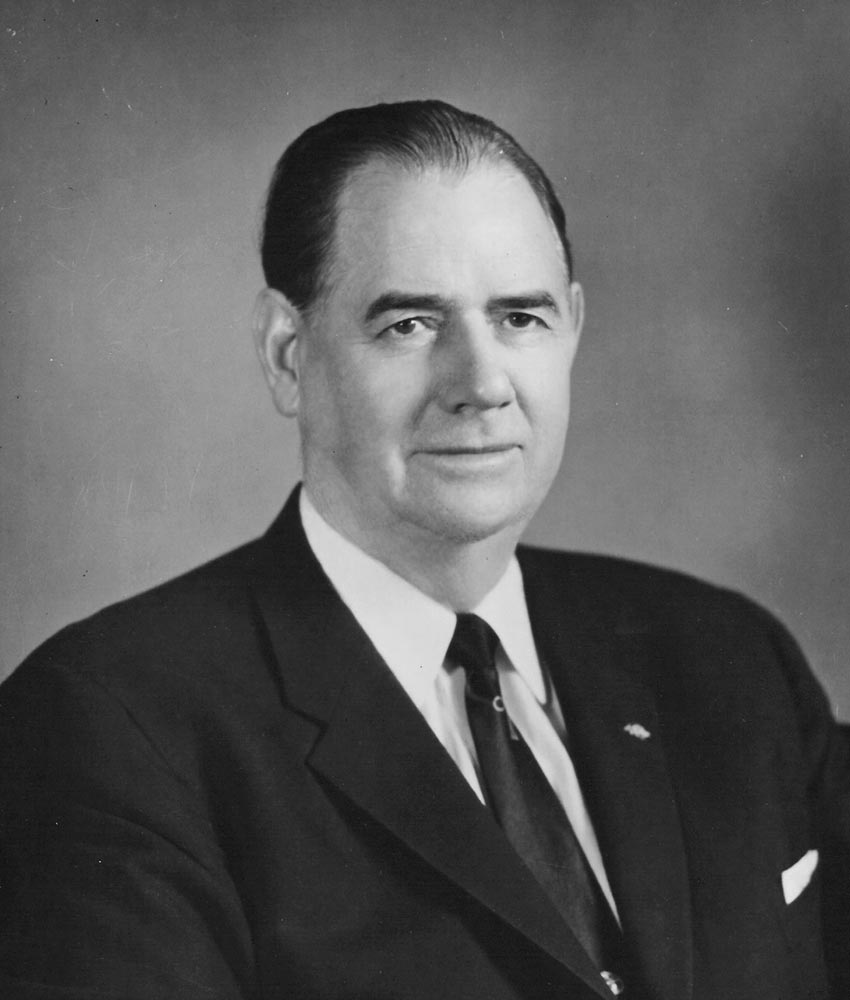
Olin D. Johnston
(1896-1965) Governor, U.S. Senator - South Carolina
I don’t run from niggers, but I run them from me.
Olin DeWitt Talmadge Johnston was governor of South Carolina from 1935 to 1939 and 1943 to 1945, and was elected to the U.S. Senate in 1944, 1950, 1956, and 1962. Johnston supported President Franklin Roosevelt’s New Deal, which put him at odds with other segregationists, including his 1938 opponent for governor, “Cotton Ed” Smith. Despite this economic liberalism, Johnston’s championing of the common man did not extend to the civil rights of African Americans. He was unapologetically racist in his rhetoric, opposed all federal efforts to weaken segregation, and attempted to maintain all-white primary elections even after the Supreme Court declared them unconstitutional.
In 1944, Johnston refused to use his powers as governor to stop the execution of George Stinney, a 14-year-old Black boy convicted of killing two white girls in a sham trial with no investigation or evidence, even though Johnston had granted clemency to a white man just six years before. In 1985, on the 50th anniversary of his first inauguration as governor, a marker honoring Johnston was erected in his native Abbeville County and the local highway was named for him. Strom Thurmond was among the honored guests at the dedication.
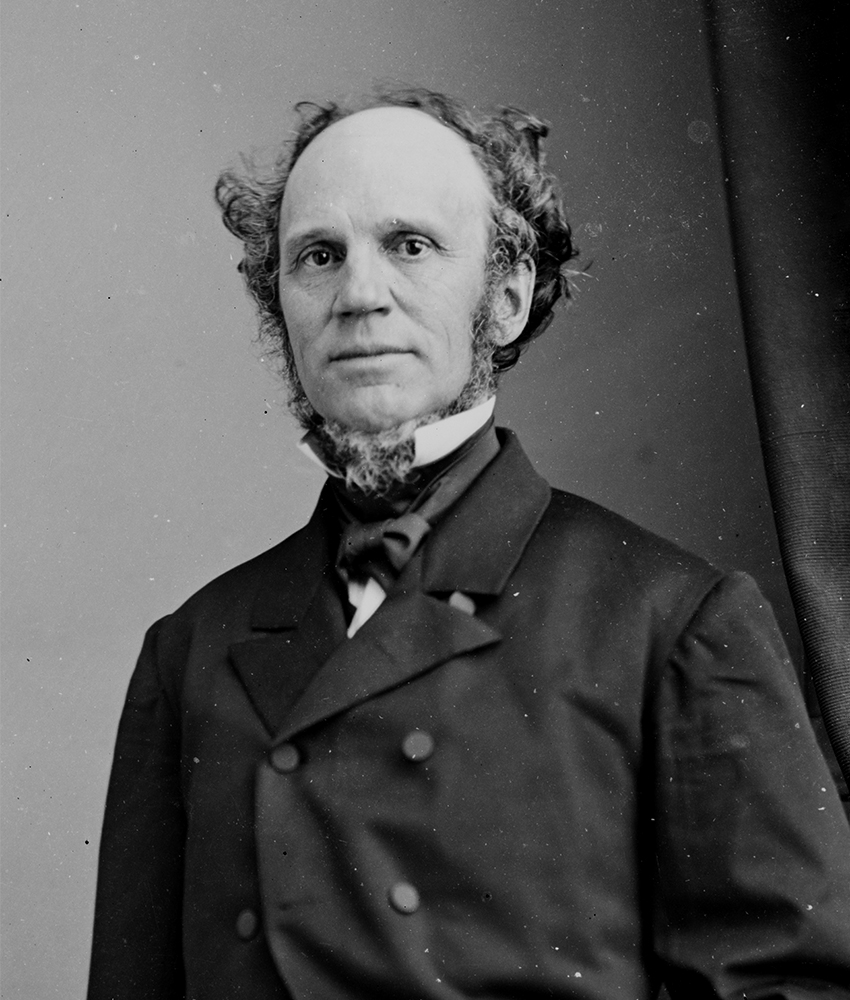
Horatio Seymour
(1810-1886) Governor - New York
This is a white man's country: Let white men rule.
Horatio Seymour, governor of New York from 1853 to 1854 and 1863 to 1864, was outspoken in his support for Southern slavery. At a campaign rally, he opposed the Emancipation Proclamation, warning that “[t]he scheme for an immediate emancipation and general arming of the slaves throughout the South is a proposal for the butchery of women and children, for scenes of lust and rapine, of arson and murder, unparalleled in the history of the world.” In 1868, Seymour ran for president on the Democratic ticket, billing himself as the “white man’s candidate” and accusing his opponent, Ulysses Grant, of standing for “Negro supremacy.” A prominent reminder that pro-slavery views were not confined to the South, Seymour lost the election but remained active in New York politics and contributed to the foundational racial rhetoric that politicians called upon well into the next century.
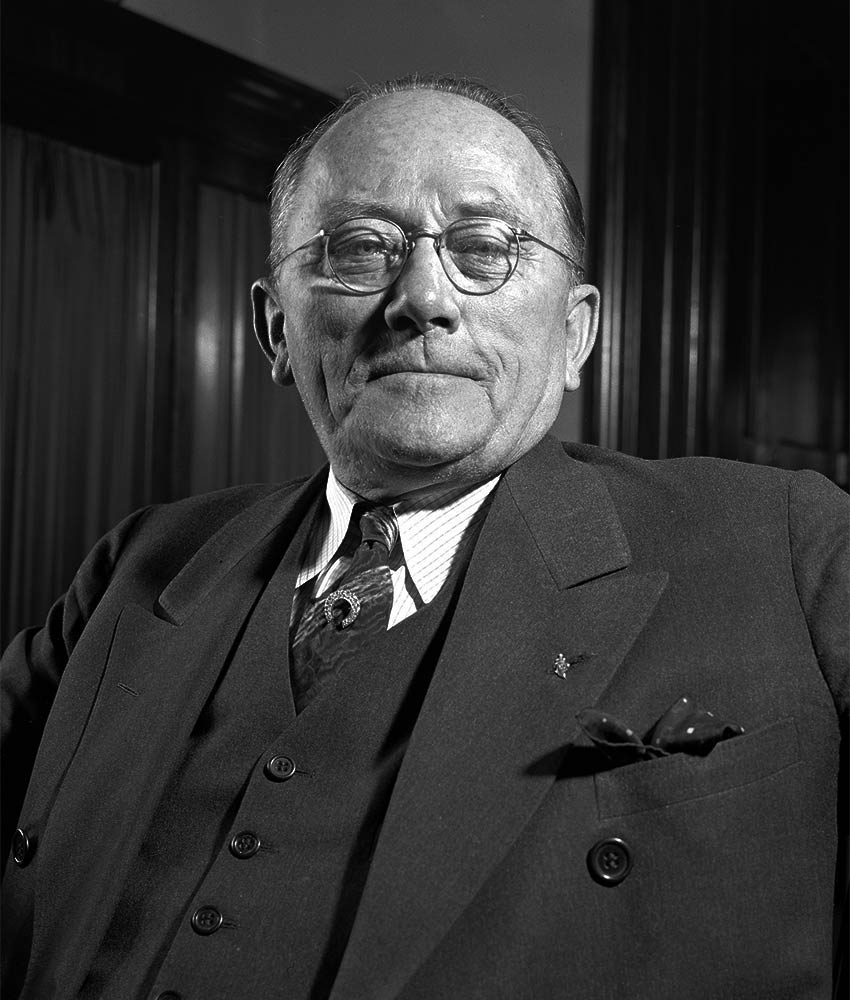
Theodore Bilbo
(1877-1947) Governor, U.S. Senator - Mississippi
It is essential to the perpetuation of our Anglo-Saxon civilization that white supremacy be maintained and to maintain our civilization there is only one solution, and that is either by segregation within the United States, or by deportation of the entire Negro race.
Theodore Bilbo served as a governor of Mississippi from 1916 to 1920 and 1928 to 1932, and as a U.S. senator from 1935 to 1947. A towering figure among white supremacist and segregationist politicians, Bilbo praised Nazi racial philosophy and was famous for his extreme and inflammatory rhetoric. In a 1938 filibuster against anti-lynching legislation, Bilbo said on the Senate floor that the bill would “open the floodgates of hell in the South” by encouraging Black men to rape white women.
In 1946, after four white men beat a Black Army veteran for attempting to register to vote, Senator Bilbo delivered a radio address urging every “red-blooded Anglo-Saxon man in Mississippi to resort to any means to keep hundreds of Negroes from the polls in the July 2nd primary.” He continued, “And if you don’t know what that means, you are just not up on your persuasive measures.” Southern senators successfully defended Bilbo against an NAACP-led effort to remove him from office for inciting violence against Black voters.
Before succumbing to cancer at age 69, Bilbo spent the last weeks of his life writing a book, Take Your Choice: Separation or Mongrelization, in which he outlined his fears of “race-mixing” and advocated for the relocation of African Americans to West Africa. (He had proposed a relocation bill in the Senate in 1938, but it failed.) Bilbo never repudiated his racist views and remained an influential figure among leading segregationists in the South long after his death.
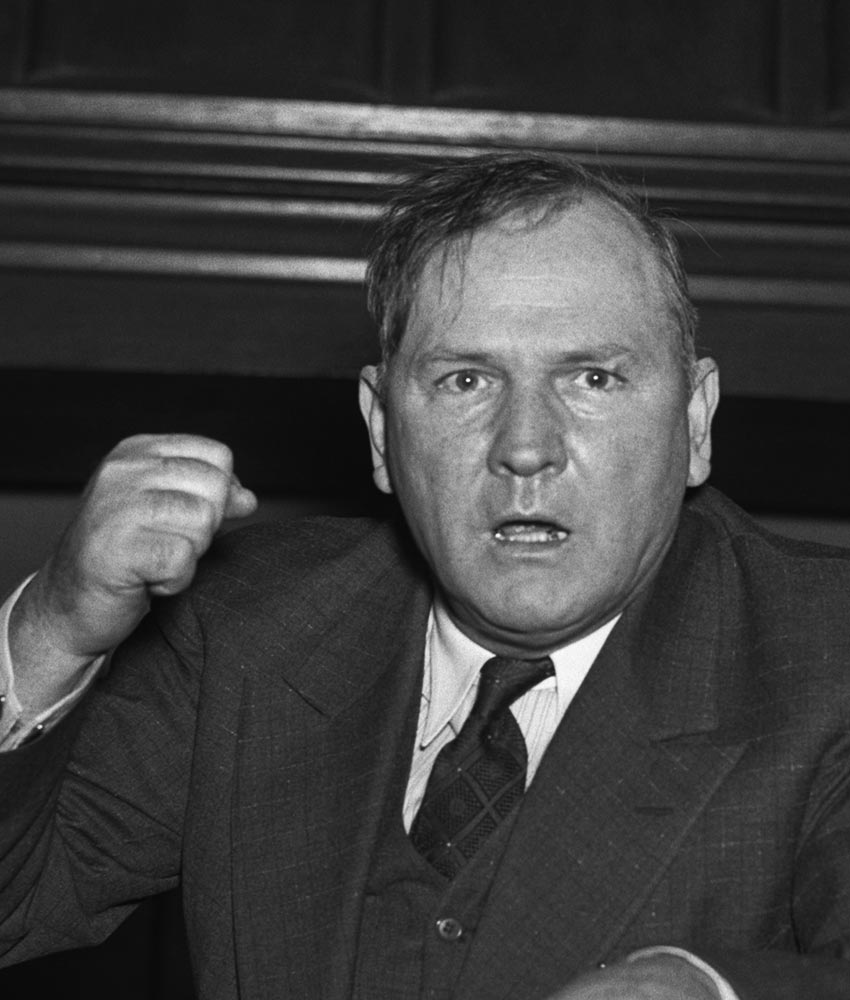
Bob Jones
(1883-1968) Evangelist - South Carolina
If we would just listen to the Word of God and not try to overthrow God’s established order, we would not have any trouble. God never meant for America to be a melting pot to rub out the line between the nations. That was not God’s purpose for this nation.
Robert “Bob” Jones was an evangelist and radio broadcaster who founded segregated Bob Jones University in Greenville, South Carolina. With financial backing from the Ku Klux Klan, Jones began his career as an itinerant evangelist, preaching to millions of people across the United States. By the 1920s he was among the most famous evangelists in the country. His university opened in 1927 as a private, Christian, all-white college that banned African American students throughout Jones’s lifetime.
Now a popular destination for conservative presidential candidates on the campaign trail, Bob Jones University did not admit Black students until 1971 and banned interracial dating until a visit from George W. Bush drew press coverage that forced the school to withdraw the policy in 2000. Jones’s commitment to segregation was rooted in his Christianity and was a foundation of his belief system. In a radio address on Easter Sunday in 1960, he explained his conviction that God was the author of segregation and that opposition to segregation amounted to opposition to God. The sermon, titled Is Segregation Scriptural?, was printed and widely distributed to students at Bob Jones University well into the 1980s.
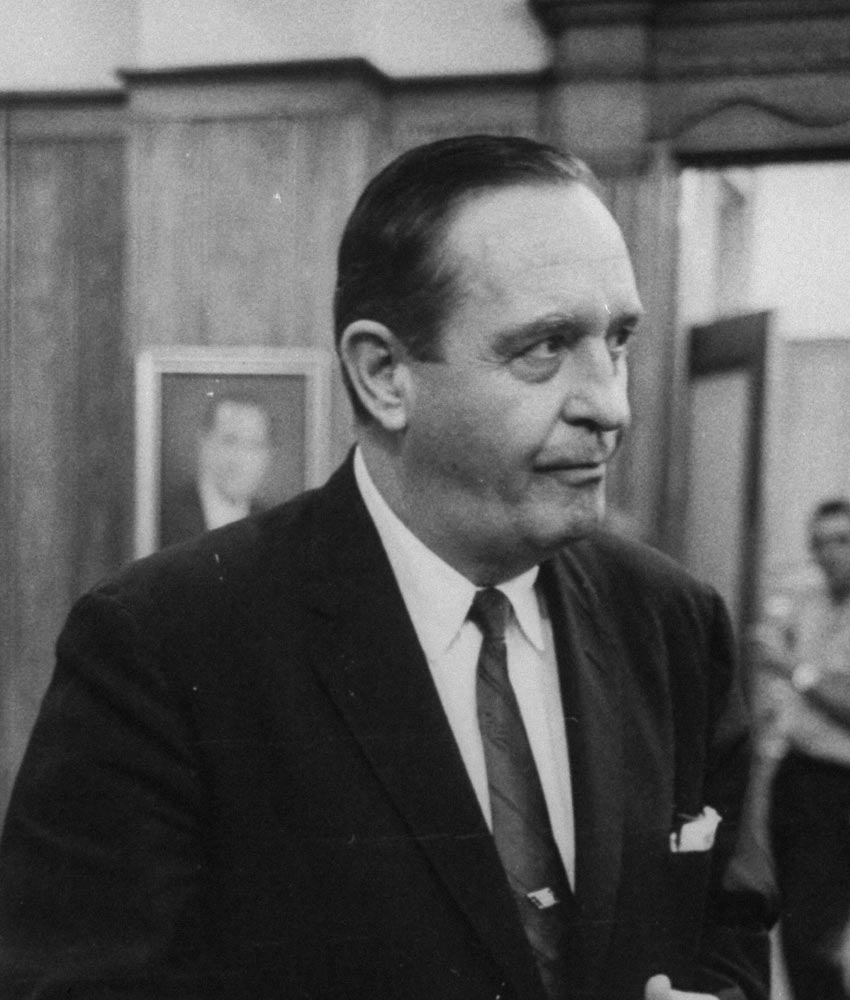
Orval Faubus
(1910-1994) Governor - Arkansas
I will never open the public schools as integrated institutions.
Orval Faubus, governor of Arkansas from 1955 to 1967, is most widely remembered for defying a federal order to desegregate Little Rock Central High School. On September 2, 1957, Faubus called in the Arkansas National Guard to block nine Black students, the Little Rock Nine, from enrolling at all-white Central High. A federal court ordered that the guardsmen be removed, but an angry mob of white men, women, and youth blocked the school entrance. To restore order and enforce the court’s ruling, President Dwight Eisenhower federalized the Arkansas National Guard and dispatched the Army to escort the Black students into the school. Faubus was not as staunch a segregationist as some Southern governors, but under pressure from hardliners and his own constituents, he embraced the segregationist cause for political gain. Though his stand did not stop school desegregation in Arkansas, it cemented his identity as a segregationist leader and earned him four more terms as governor.
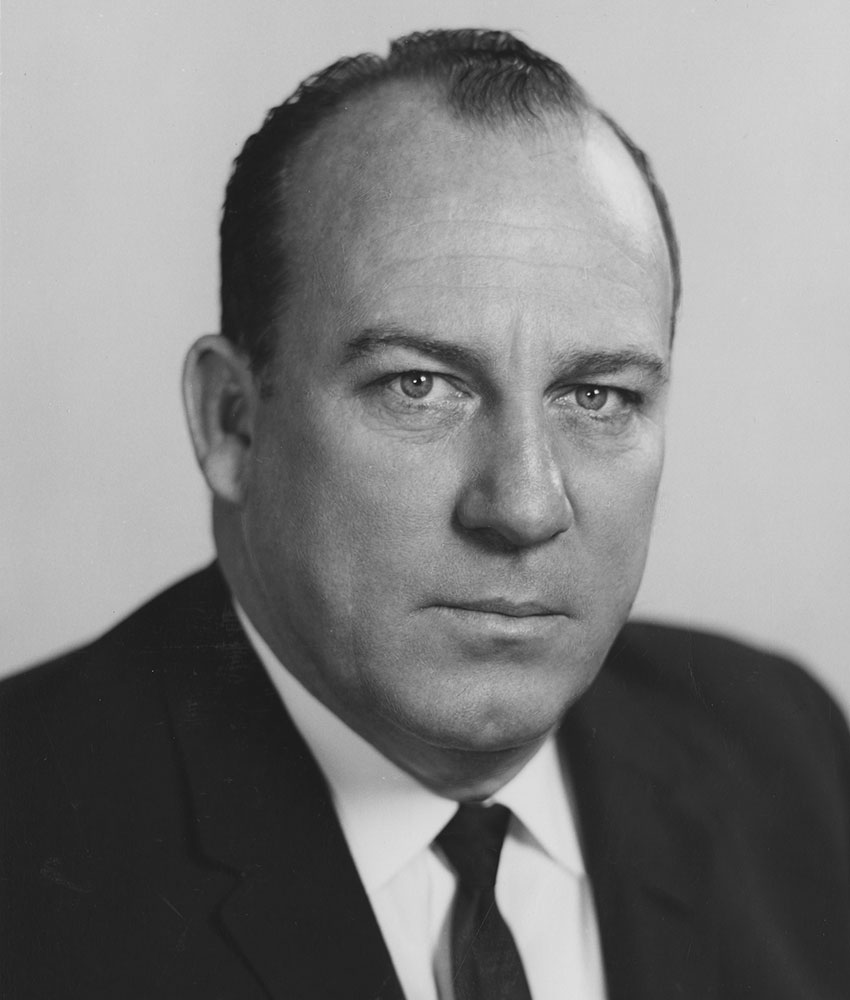
Jack Gremillion
(1914-2001) Attorney General - Louisiana
I have fought integration with all the talent and vigor I possess.
As Louisiana’s attorney general from 1956 to 1971, Jack Gremillion played prominently in state efforts to resist desegregation. After a federal judge ordered New Orleans public schools desegregated, Gremillion drafted a new law giving the state legislature exclusive authority to determine schools’ racial composition. In response, a panel of three federal judges declared the state law unconstitutional, ordered state officials to cease interfering with integration, and restored control of desegregation to the school board. Gremillion famously was held in contempt of court for calling the federal court a “den of iniquity," and he successfully used litigation to bar the NAACP from operating in Louisiana for a period. Gremillion's tenure as attorney general ended in 1972 when he was convicted of federal perjury charges and sentenced to three years in prison.
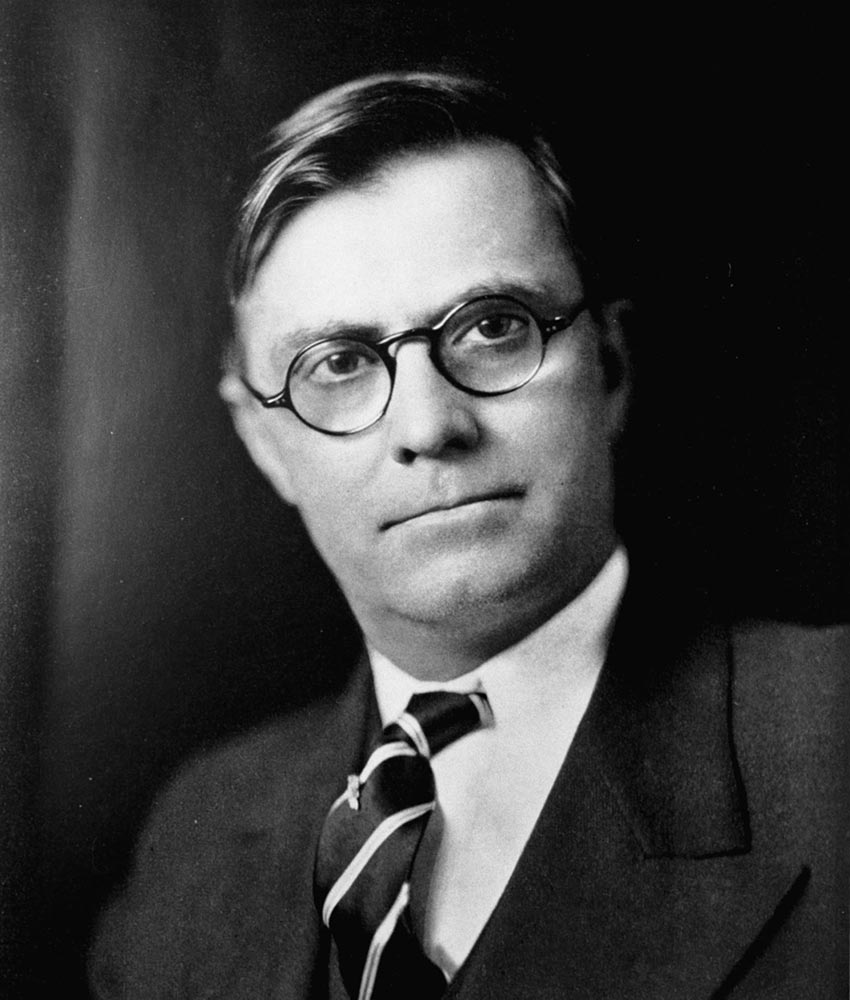
Eugene Talmadge
(1888-1946) Governor - Georgia
The South loves the Negro in his place -- but his place is at the back door.
A dominant figure in Georgia politics and a virulent racist, Eugene Talmadge was elected governor in 1932 after he ran on a white supremacist and segregationist platform, and won re-election three times. Talmadge defended racial hierarchy and demanded the same from others. In the early 1940s, when he suspected that the dean and faculty at the University of Georgia were not committed to racial segregation, Talmadge expelled members of the Board of Regents, fired professors, and censored books that promoted social equality.
The Ku Klux Klan supported Talmadge’s unprecedented actions and even orchestrated a scheme to get “evidence” against the dean by kidnapping one of his Black employees. The resulting scandal cost Talmadge the 1942 election, but voters overwhelmingly returned him to office in 1946 after a campaign so steeped in racist rhetoric that it sparked violence across the state. The FBI later investigated Talmadge for inciting mob violence and sanctioning the 1946 lynching of two Black couples in Walton County in an effort to sway rural white voters during his campaign. The case was dropped after a federal grand jury claimed it could not identify any members of the lynch mob.
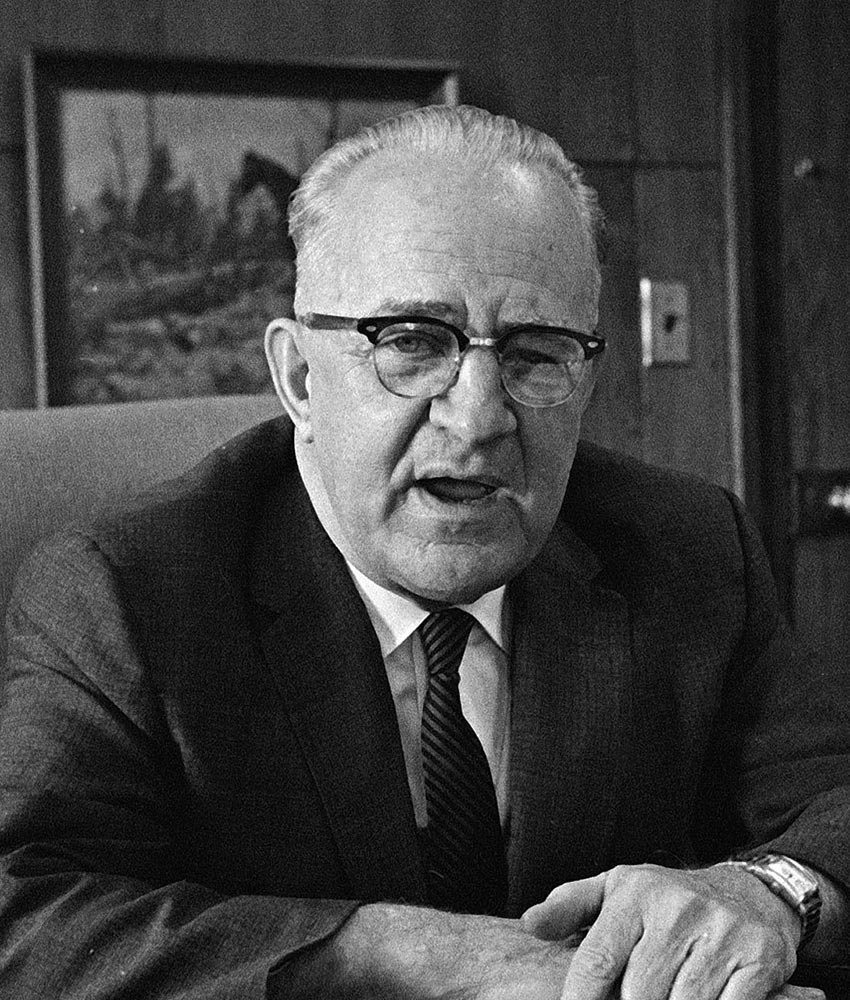
Eugene “Bull" Connor
(1897-1973) Public Safety Director - Birmingham, Alabama
All you gotta do is tell them you’re going to bring the dogs. Look at ‘em run. Bring the dogs anyway, captain.
Eugene “Bull” Connor was an Alabama politician and notorious segregationist with close ties to the Ku Klux Klan. As Birmingham’s Commissioner of Public Safety during the Civil Rights Movement, Connor facilitated -- and in some cases ordered -- acts of violence against peaceful protestors. In 1961, he allowed a white mob armed with pipes to attack the Freedom Riders, Black and white college students who rode buses through the South to challenge illegal segregation in interstate transportation. When the students arrived in Birmingham, Connor intentionally failed to protect them, having promised local Klan members that he would “see to it that 15 or 20 minutes would elapse before the police arrived.” The Freedom Riders were brutally beaten, and several suffered serious injuries.
In 1963, the entire world witnessed Connor’s brutality when Martin Luther King Jr. came to Birmingham to lead a children’s protest against racial segregation. Connor ordered the fire department to blast nonviolent protestors -- most of them children -- with high-pressure firehoses and commanded police to attack them with batons and police dogs. Televised images of demonstrators being bitten by dogs, beaten by officers, and slammed into walls by firehoses cemented Bull Connor’s role as a national icon of racist ideology and segregationist violence. Connor never repudiated his defense of racial segregation or denounced his used of police violence.
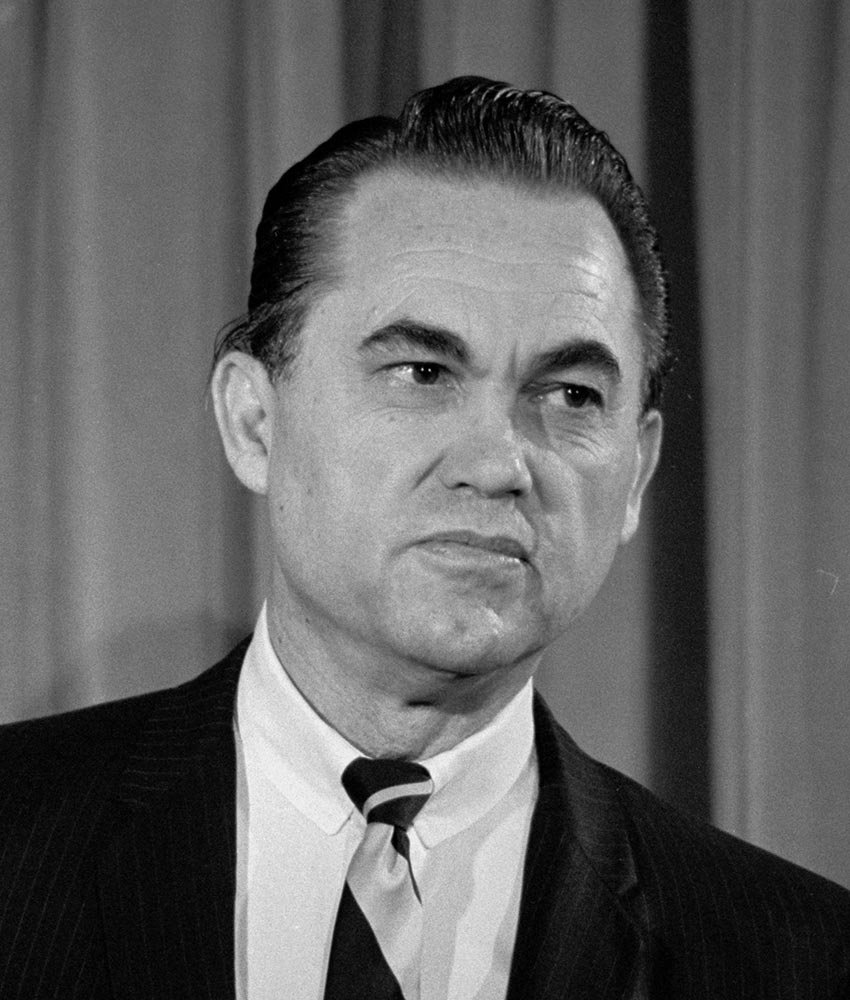
George Wallace
(1919-1998) Governor - Alabama
In the name of the greatest people that have ever trod this earth I draw the line in the dust and toss the gauntlet before the feet of tyranny… and I say… segregation now… segregation tomorrow… segregation forever.
The political legacy of four-time Alabama governor and four-time presidential candidate George Wallace is enduring and increasingly relevant. Wallace’s 1962 gubernatorial campaign used the slogan “Stand up for Alabama,” and he vowed to fight integration at the University of Alabama. Wallace gave a furious inauguration speech, written by Ku Klux Klan organizer Asa E. Carter, in which he condemned integration and federal intervention in state affairs. Six months later, Wallace launched himself into the spotlight by physically blocking two Black students, Vivian Malone and James Hood, from enrolling at the University of Alabama. The dramatic “stand in the schoolhouse door” was broadcast on national television, and within a week, Wallace received over 100,000 telegrams commending his actions.
Wallace developed a political identity that combined racial demagoguery and fiery rhetoric to defend segregation under the veneer of “states’ rights.” By appealing to racial sentiments, Wallace gained the support of votes who felt threatened by increasing Black political power. His overt appeals to segregationists later burdened Wallace’s presidential campaigns and he never reached national office. Today, a portion of Interstate 10 in Alabama and community colleges in the cities of Dothan and Eufaula bear George Wallace’s names. He remains one of the most infamous and influential segregationist leaders of this era.
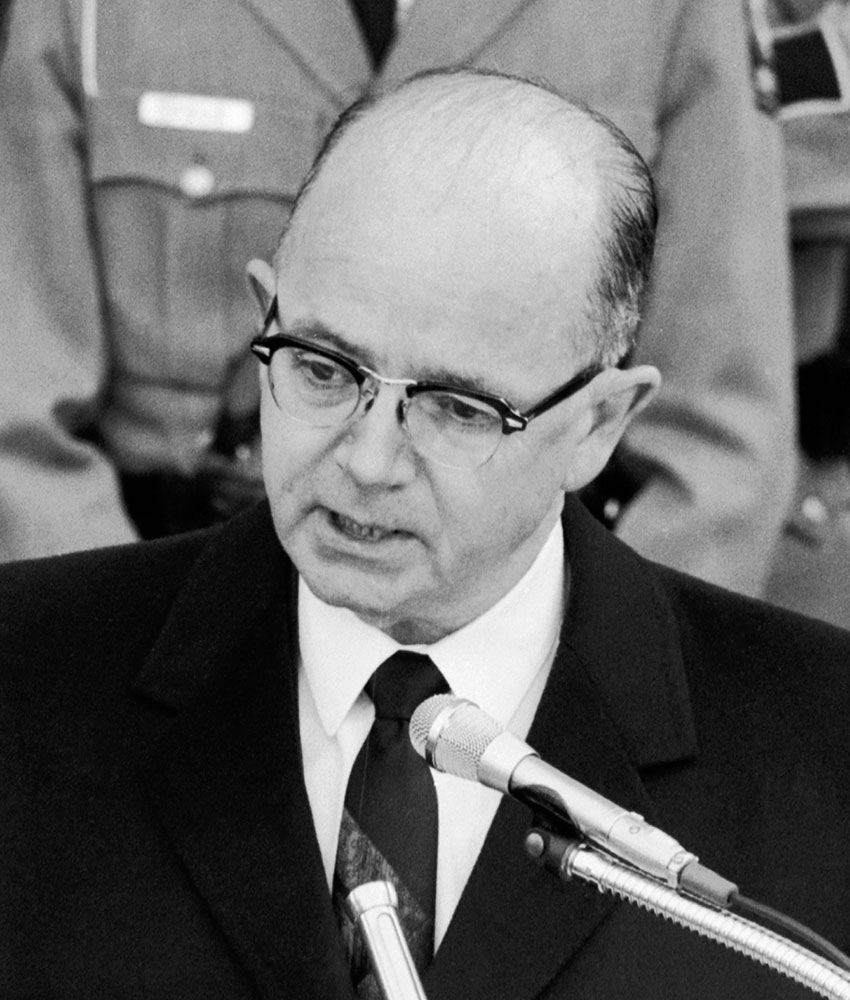
Lester Maddox
(1915-2003) Governor - Georgia
If necessary, we should close our schools for a month or a year or two years. It would be better to do that and have free children than slave children.
Lester Maddox first entered the national spotlight in 1964 when he violated the Civil Rights Act by refusing to serve three Black patrons in his Atlanta restaurant, the Pickrick. Maddox provided his white customers with wooden pick handles, dubbed “Pickrick drumsticks,” to threaten Black people against entering his restaurant. When a federal court ordered him to integrate the restaurant, Maddox sold it. In 1966, he capitalized on his notoriety by running for governor on a segregationist “states’ rights” platform and, with the KKK’s endorsement, won.
During his four years as governor, Maddox promoted a racist segregationist agenda, vigorously opposed integrating Georgia public schools, and refused to permit Martin Luther King Jr. to lie in state after he was assassinated in 1968. In a 2001 interview, Maddox remained recalcitrant. “I want my race preserved,” he said, “and I hope most everybody else wants theirs preserved. I think forced segregation is illegal and wrong. I think forced racial integration is illegal and wrong. I believe both of them to be unconstitutional.” He died two years later at age 87.
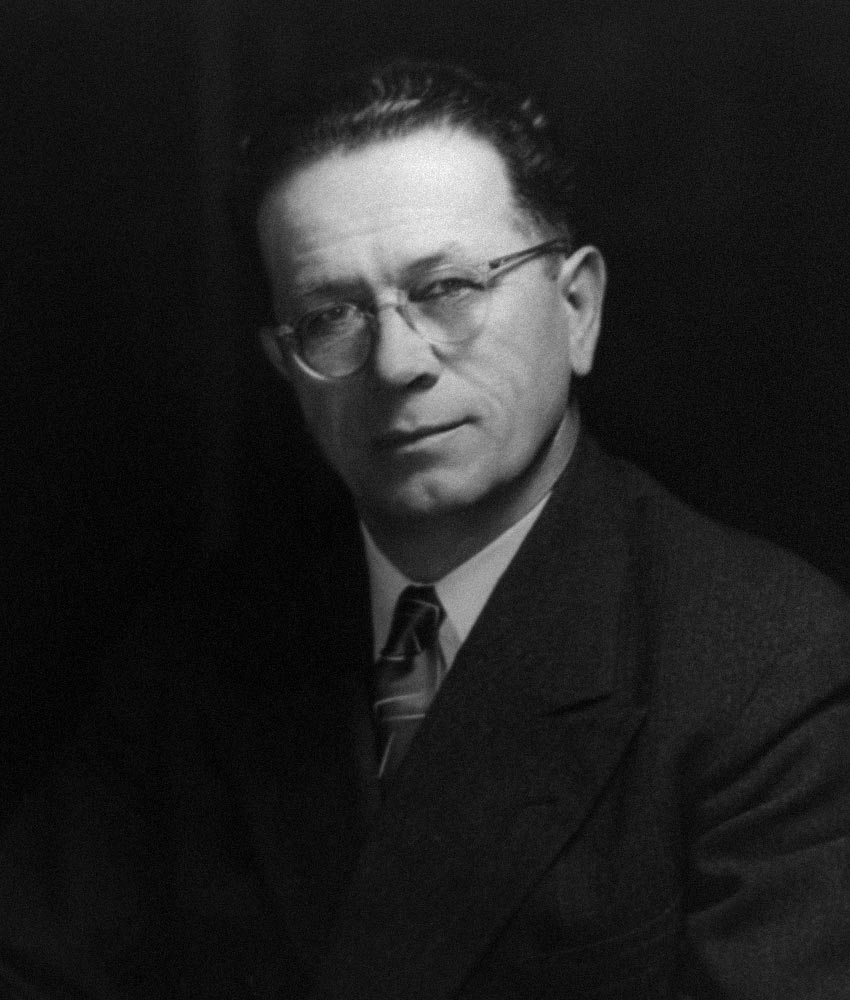
Allan Ellender
(1890-1972) U.S. Senator - Louisiana
It is a sad spectacle, to say the least, and it leads one to the inevitable conclusion that up to now the Negro race has not shown itself capable of effective self-government.
A towering figure in Louisiana history, Allan Ellender was a U.S. senator from 1937 until his death in 1972. Though widely regarded as a moderate and a pragmatist who supported liberal New Deal policies, Ellender was deeply committed to racial separation and consistently supported segregationist policies. In voicing his opposition to President Harry Truman’s proposed civil rights bill, Ellender insisted that “the Negro himself cannot make progress unless he has white leadership. If you call that ‘supremacy,’ why suit yourself. But I say that the Negro race as a whole, if permitted to go to itself, will invariably go back to barbaric lunacy.”
Ellender organized a six-day filibuster to kill an anti-lynching bill, categorically voted against all civil rights legislation, voted to retain the poll tax, and joined Strom Thurmond and other segregationists in signing the 1956 Southern Manifesto that criticized the 1954 Brown decision desegregating public schools. Today, several Louisiana public schools and a dorm and library at Nicholls State University in Thibodaux are named after him, and he was inducted into the Louisiana Political Museum and Hall of Fame in 1994.
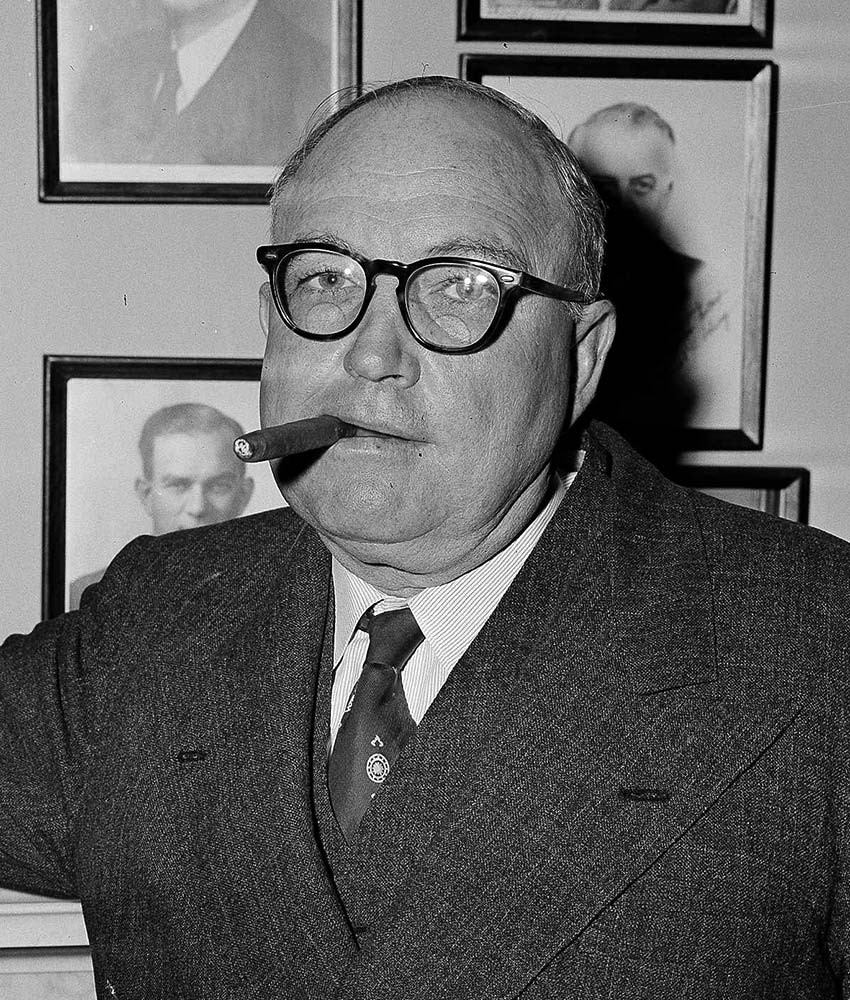
James O. Eastland
(1904-1986) U.S. Senator - Mississippi
Those who would mix little children of both races in our schools are following an illegal, immoral, and sinful doctrine…
A wealthy Mississippi plantation owner and U.S. senator from 1942 to 1978, James O. Eastland was nationally known as a stalwart of Southern resistance to desegregation. In 1956, Eastland became chairman of the Senate Judiciary Committee, which reviewed civil rights bills and judicial nominations. Under his leadership, the committee became known as the “graveyard” for civil rights legislation. Civil rights bills passed during this period only if they managed to bypass Eastland’s committee. Eastland also opposed federally mandated desegregation by proposing a constitutional amendment that provided that “there shall be no limitations upon the power of any state to regulate health, morals, education, marriage and good order in the state.” Near the end of his life, when asked if he would change anything he had done as a politician, Eastland answered, “I voted my convictions on everything.”
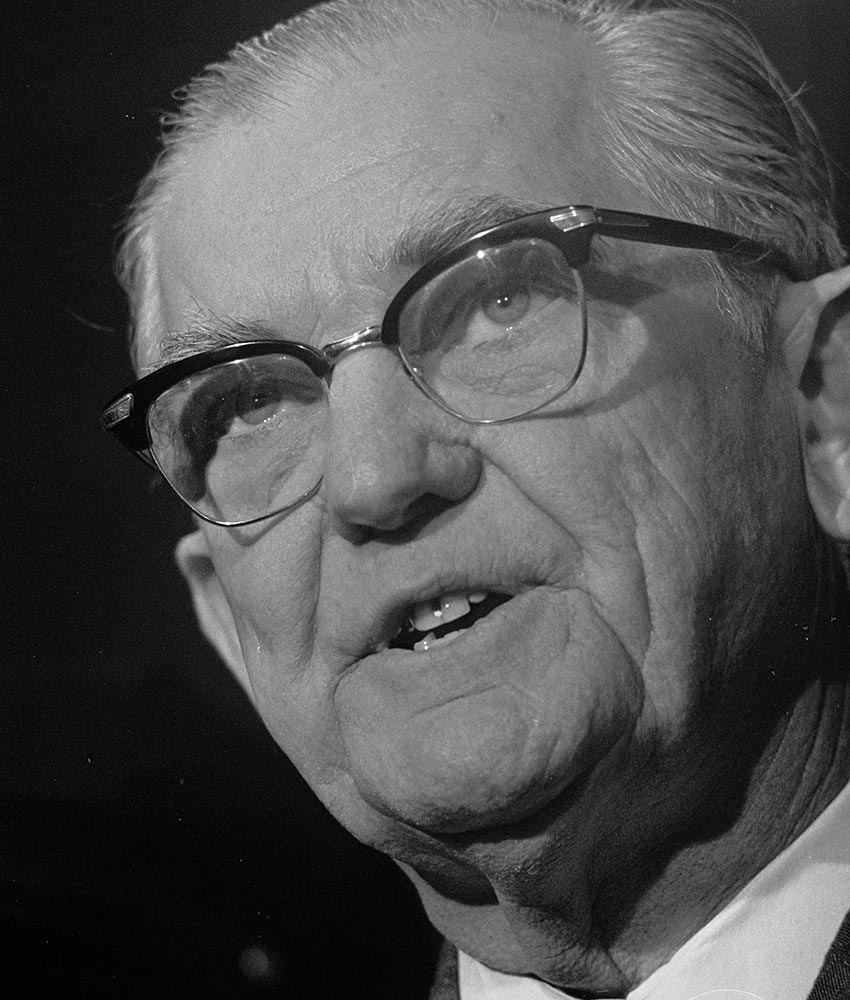
John Stennis
(1901-1995) U.S. Senator - Mississippi
We are not going to comply with the Supreme Court decision of putting whites and blacks together, but the least we advertise that fact, the better.
John Stennis represented Mississippi in the Senate from 1947 to 1989. More restrained than his predecessor, Theodore Bilbo, Stennis carried on Bilbo’s segregationist, white supremacist agenda using the coded language of “states’ rights.” Stennis opposed anti-poll tax amendments, anti-lynching legislation, the Fair Employment Practices Committee, the Voting Rights Acts of 1965, and the Civil Rights Acts of 1964 and 1968. After Brown, Stennis proposed maintaining segregation by improving African American schools so that integration could be rendered unconstitutionally unnecessary, and he urged white Mississippians to abandon public schools rather than permit their children to attend classes with Black children. Stennis was among 19 Southern senators who signed the Southern Manifesto in defiance of Brown. Many state and federal institutions in Mississippi bear his name, including a hospital in DeKalb, a federal dam near Columbus, and the John C. Stennis Institute of Government and Community Development at Mississippi State University.
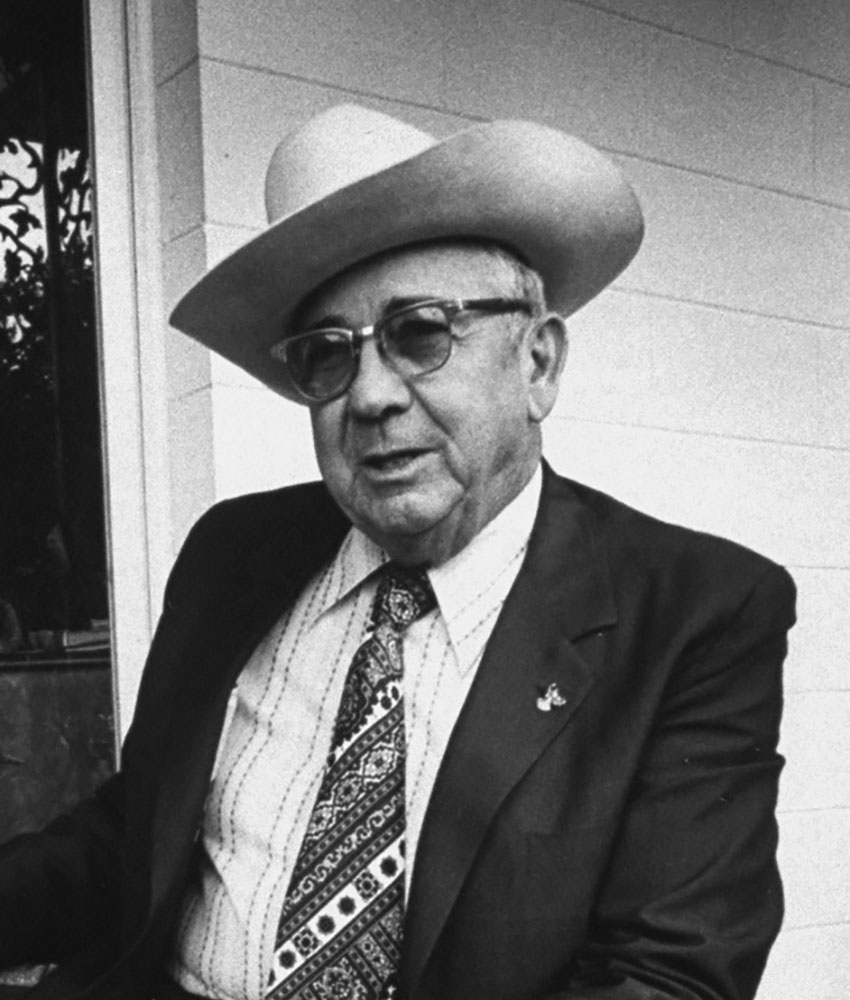
Willis McCall
(1909-1994) Sheriff - Lake County, Florida
Get those niggers out of school.
Willis McCall, Sheriff of Lake County, Florida, from 1945 to 1972, was infamous for using violence to enforce segregation and terrorize the African American community. In 1951, in the midst of a high-profile retrial of two Black men wrongly convicted of raping a white woman, McCall shot the two men while they were handcuffed and in his custody. The men, Samuel Shepherd and Walter Irvin, were two of the four Groveland Boys, named for the town where the alleged rape occurred. Shepherd was killed but Irvin survived the two gunshots to his chest and told the FBI that McCall had shot him and Shepherd in cold blood. McCall claimed self-defense and was never charged.
A staunch segregationist, McCall insisted on posting segregated bathroom signs at the Lake County Jail until the Justice Department forced their removal. In 1954, he enforced the Lake County School Board’s decision to ban five children from a segregated school after personally deciding they were “Negro” even though their parents insisted they were white. McCall’s reign of terror ended in 1972, when an intellectually disabled Black man was kicked to death in his jail. With the support of many local whites, McCall was acquitted by an all-white jury, and lost a bid for an eight term as sheriff by a slim margin. McCall died in 1994 at the age of 84 after writing a memoir in which he defended his commitment to segregation and the morality of his methods.
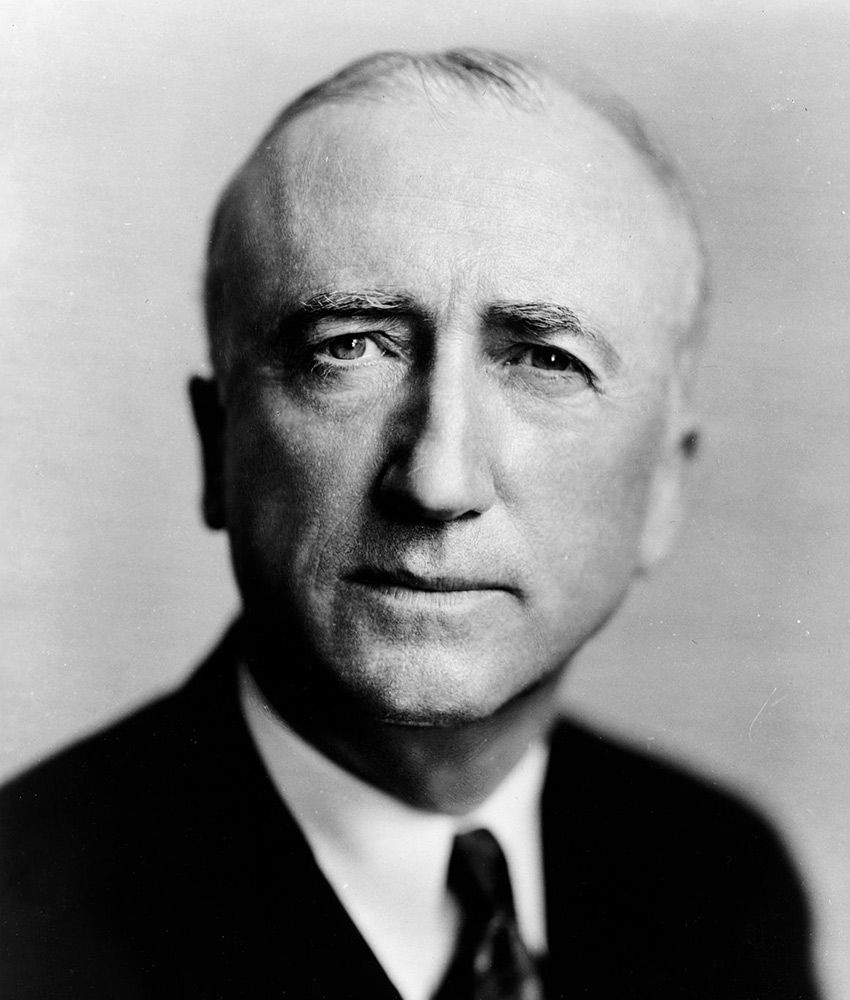
James F. Byrnes
(1882-1972) U.S. Senator, Governor, Associate Justice (US Supreme Court) - South Carolina
This is a white man’s country, and will always remain a white man’s country.
James F. Byrnes was an influential South Carolina politician and avowed segregationist who held high-level positions in state and federal government for more than four decades. As a member of the U.S. House of Representatives and Senate for more than two decades, Byrnes personally blocked a Senate investigation of a South Carolina lynching and opposed federal anti-lynching legislation, insisting that “rape is responsible, directly and indirectly, for most of the lynching in America.” When Byrnes was nominated to the Supreme Court in 1941, the NAACP opposed his confirmation in a telegram to the White House: “If Senator Byrnes at any time in his long public career failed to take a position inimical to the human and citizenship rights of 13 million American Negro citizens, close scrutiny of his record fails to reveal it.” Byrnes was confirmed to the Court, and later held the office of Secretary of State under President Harry Truman.
He remained a vocal opponent of integration throughout his term as South Carolina governor from 1951 to 1955. In his inaugural address, Byrnes proclaimed, “Whatever is necessary to continue the separation of the races in the schools of South Carolina is going to be done by the white people of the state. That is my ticket as a private citizen. It will be my ticket [as governor].” Since his death in 1972, Byrnes has been widely recognized; a building and a professorship at the University of South Carolina bear his name, as do Byrnes Auditorium at Winthrop University, Byrnes Hall dormitory at Clemson University, and James F. Byrnes High School in Duncan, South Carolina.
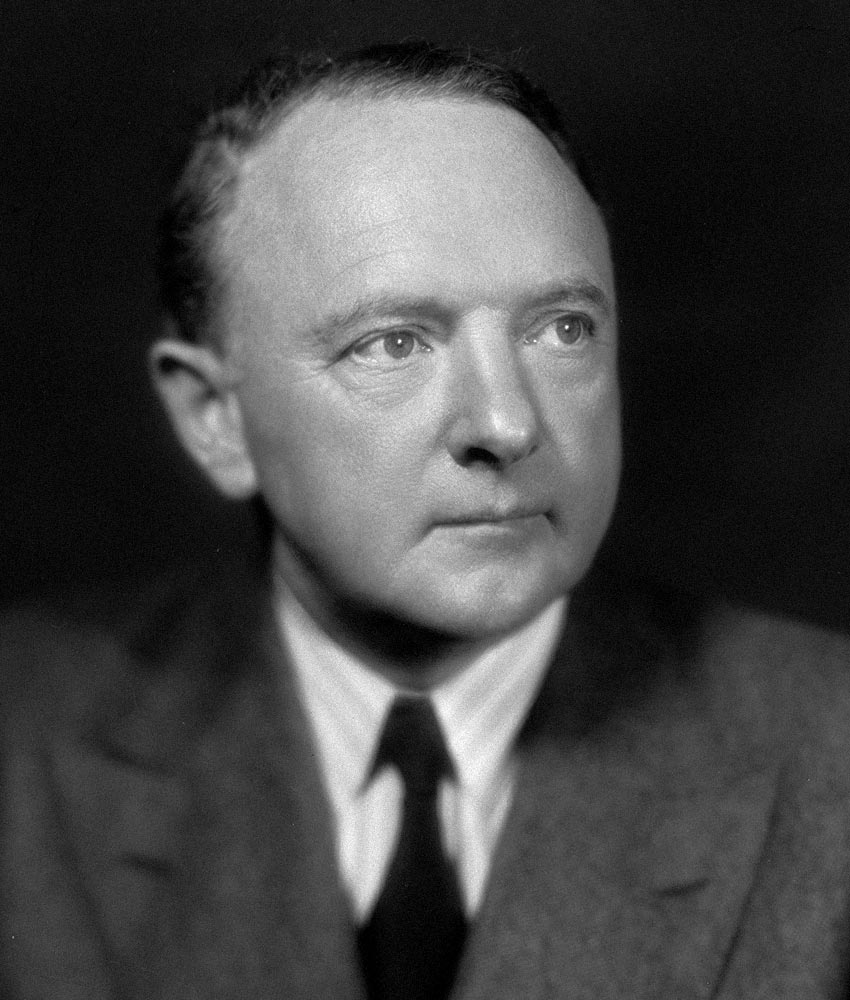
Harry Byrd
(1887-1966) U.S. Senator - Virginia
[The order to desegregate public schools] has brought Virginia to its greatest crisis since the war between the states.
Harry Byrd Sr. was a Virginia politician and segregationist who served as governor from 1926 to 1930 and as a U.S. senator from 1933 to 1965. He was well known for his vocal opposition to Brown and to racial integration of any kind. On February 25, 1956, Byrd announced an anti-integration strategy that became known as “Massive Resistance.” He supported a group of laws passed in 1956 to prevent integration of Virginia public schools by ending compulsory school attendance, providing vouchers to white parents to enroll their children in segregated private schools, and creating a Pupil Placement Board with the power to assign students to particular schools. The mainstay of Massive Resistance was a law that cut off state funds and closed any public school that attempted to integrate. Byrd also built a coalition of nearly 100 Southern politicians who endorsed the Southern Manifesto, which declared the intent to resist racial integration by “any lawful means.”
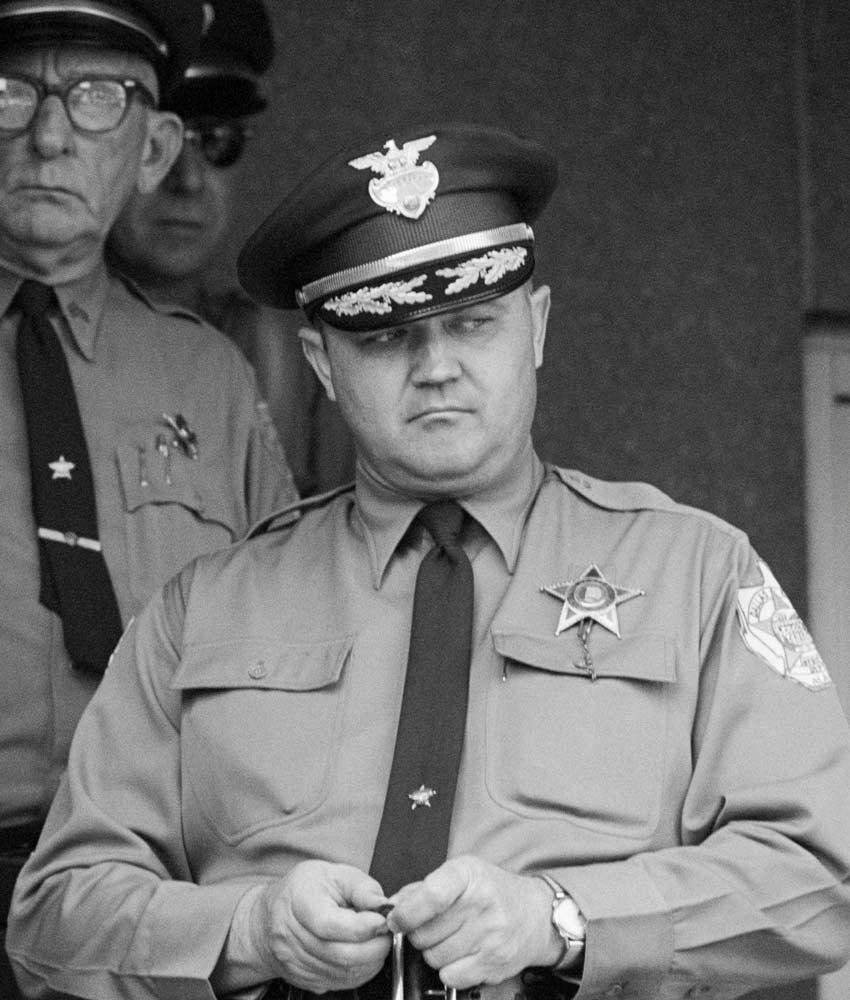
Jim Clark
(1922-2007) Sheriff - Dallas County, Alabama
Our niggers are gettin’ along all right. They wouldn’t be no problem if Martin Luther King and his Communists would get outta here.
In the role of Dallas County Sheriff from 1955 to 1966, James Gardner (Jim) Clark was an intransigent and violent opponent of integration and the expansion of civil rights. Clark described the civil rights movement as an act of “Black supremacy,” and regularly wore a white button bearing the word “Never” in response to the protest anthem, We Shall Overcome. Clark dressed in military attire, wielded a .38-caliber pistol, and attacked activists with his nightstick and an electric cattle prod. He was often accompanied by a group of mounted volunteers armed with whips and clubs who beat and tear-gassed protestors at his command. On March 7, 1965, known as Bloody Sunday, Clark ordered his posse to beat hundreds of peaceful protesters attempting to march from Selma to Montgomery to demand voting rights for Black residents. After the 1965 Voting Rights Act enabled Dallas County’s Black residents to register to vote, Clark lost his 1966 re-election bid. In an interview in 2006, a year before he died at age 84, Clark said “I would do the same thing today if I had to do it all over again.”
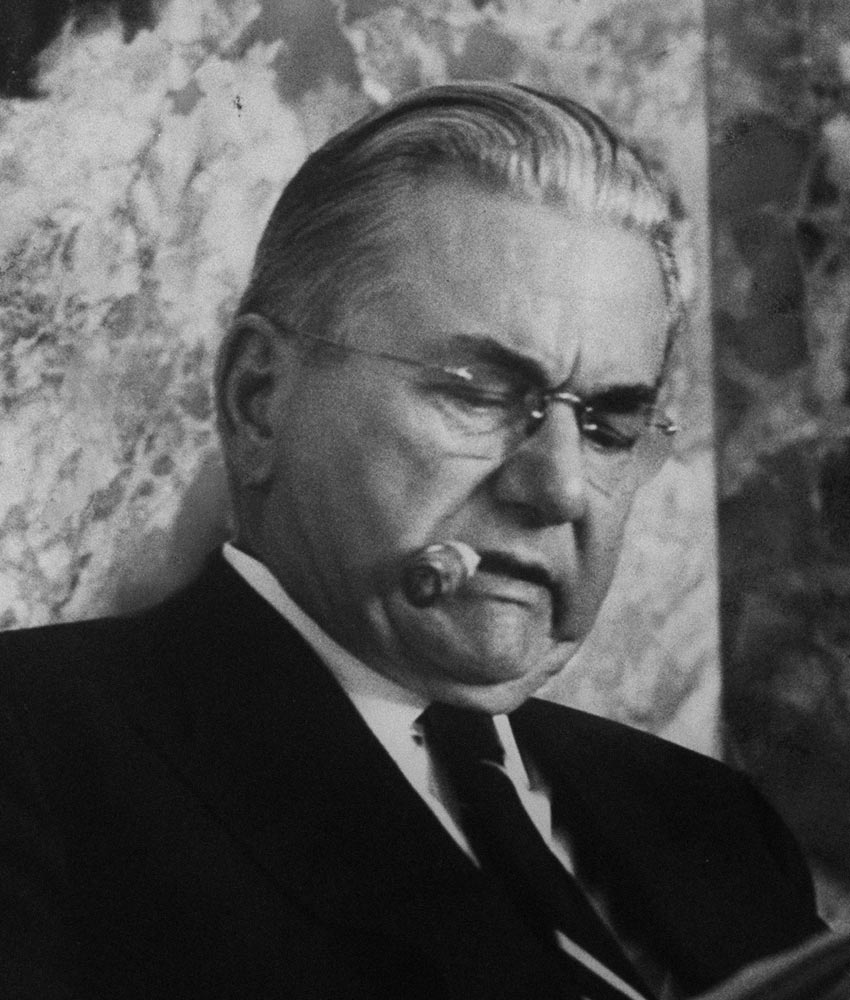
Leander Perez
(1891-1969) Judge, District Attorney - Louisiana
Don’t wait for your daughters to be raped by these Congolese. Don’t wait until the burr-heads are forced into your schools. Do something about it now.
Descended from Spanish ancestors who settled in Louisiana, Leander Perez Sr. was a Louisiana politician of unrivaled power and influence and one of the state’s fiercest foes of African American civil rights. As a judge, district attorney for Plaquemines and St. Bernard parishes, and kingmaker in Louisiana politics, Perez developed a national reputation as a leading segregationists aligned with high-profile Dixiecrats like Alabama Governor George Wallace, Georgia Governor Lester Maddox, and Mississippi Governor Ross Barnett. As the Louisiana campaign manager for the presidential campaigns of Barry Goldwater in 1964 and George Wallace in 1968, Perez helped with segregationist majorities in the parishes under his control. He mobilized resistance to integration by founding the 50,000-member white supremacist Citizens’ Council of Greater New Orleans, and argued that racial segregation was mandated by the Bible even after the Archdiocese of New Orleans excommunicated him for opposing integration in Catholic schools.
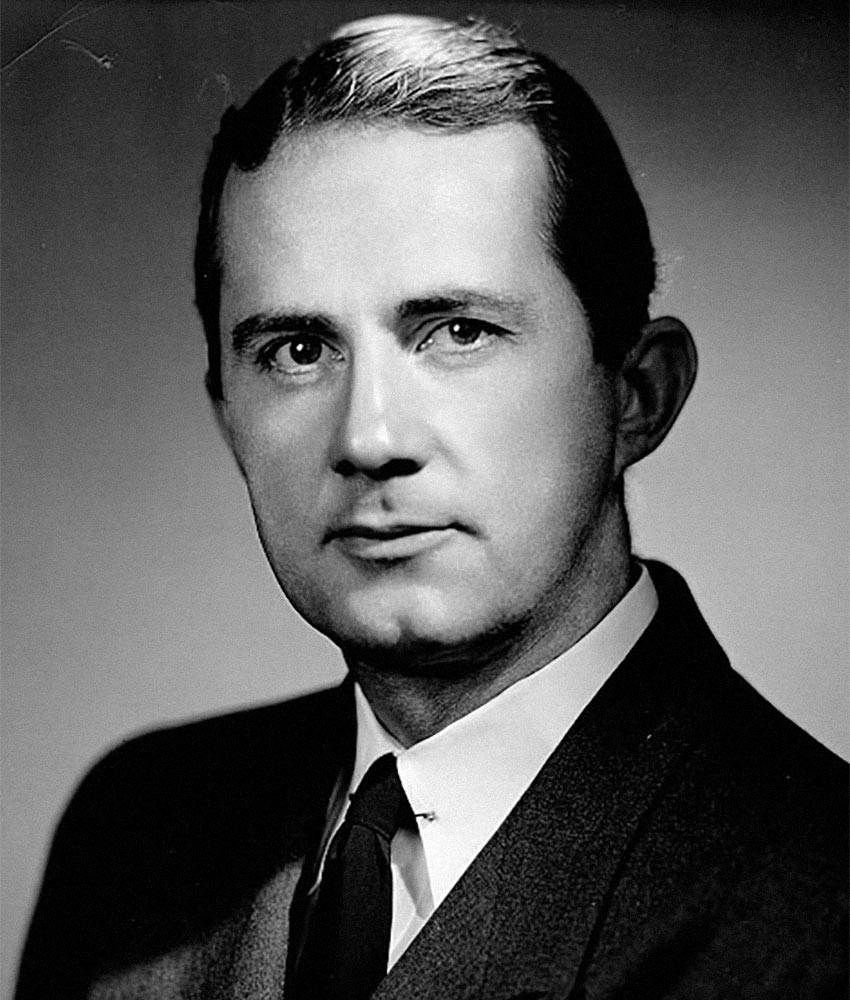
Allan Shivers
(1907-1985) Governor - Texas
Segregation in Texas will continue as long as I am governor.
Widely known for his segregationist views, Allan Shivers served as governor of Texas from 1949 until 1957. Unlike more outspoken politicians, Shivers avoided outright name-calling in favor of more carefully phrased white supremacist rhetoric. He was a staunch advocate of “state’s rights,” which he used to rationalize his refusal to implement federal desegregation orders. After Brown, Shivers expressed his intent to defy federal orders to integrate Texas public schools and warned that racial violence would inevitably result.
He gained national prominence in 1956 when the Mansfield school district near Fort Worth received Texas’s first desegregation order. An angry mob prevented three Black students from entering Mansfield High, and Shivers sent Texas Rangers to protect the mob and prevent the students from attending school. The Eisenhower administration, in the middle of a re-election campaign, did not intervene. Shivers’s action inspired Arkansas Governor Orval Faubus to adopt similar tactics at Little Rock’s Central High School in 1957. Throughout his political career, Shivers defended segregation and stood as a leader and supporter of white opposition to racial equality.
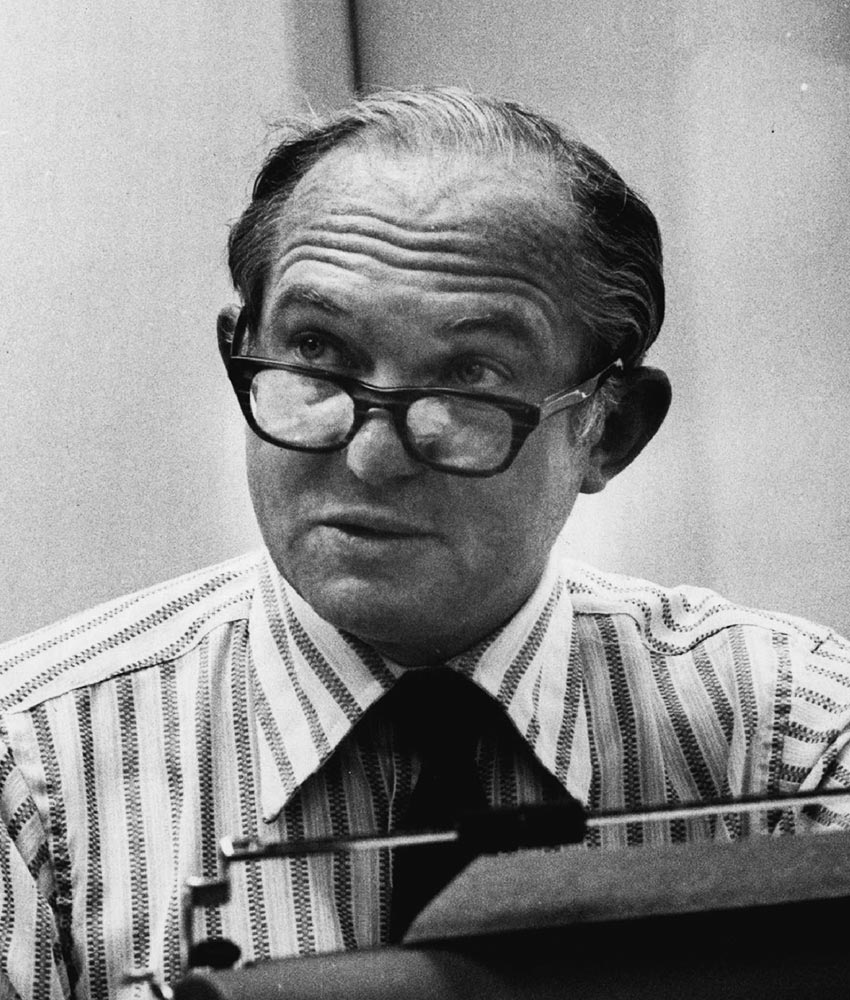
James J. Kilpatrick
(1920-2010) Journalist, Writer, Speaker - Virginia
There are respected Negro teachers, lawyers, doctors, writers. Of course, there are. But in general terms, where is the Negro to be found? Why, sir, he is still carrying the hod. He is still digging the ditch. He is down at the gin mill shooting craps. He is lying limp in the middle of the sidewalk, yelling he is equal. The hell he is equal.
A journalist and prominent voice of the white resistance to civil rights, James Kilpatrick was editor of Virginia’s Richmond News Leader and gained national attention in the 1950s and 1960s for his ardent defense of segregation. In a series of influential editorials, Kilpatrick encouraged Southern politicians to resist the Brown decision and laid out a framework for resistance under the banner of “states’ rights.” He regularly appeared on television to represent the segregationist cause, including in a televised debate in 1960 with Dr. Martin Luther King Jr. during which Kilpatrick insisted that civil rights protestors who violate segregation laws they believe are invalid must share the moral high ground with white Southerners who resist desegregation orders they deem unjust.
Though he often used coded language to talk about race, Kilpatrick’s beliefs were transparent. In 1963, he drafted an article titled The Hell He is Equal in which he argued that “the Negro race, as a race, is in fact an inferior race.” After four Black girls were killed by a bomb that white supremacists planted in their Birmingham, Alabama church to punish the congregation for its civil rights activism, the Saturday Evening Post’s editor deemed Kilpatrick’s article in “bad taste” and declined to publish it. In the 1970s, as a syndicated conservative columnist seeking to shed his reputation and attract a wider audience, Kilpatrick minimized his defense of segregation as a viewpoint he naturally adopted because he was “brought up a white boy in Oklahoma City in the 1920 and 1930s,” but he never publicly renounced his white supremacist views.
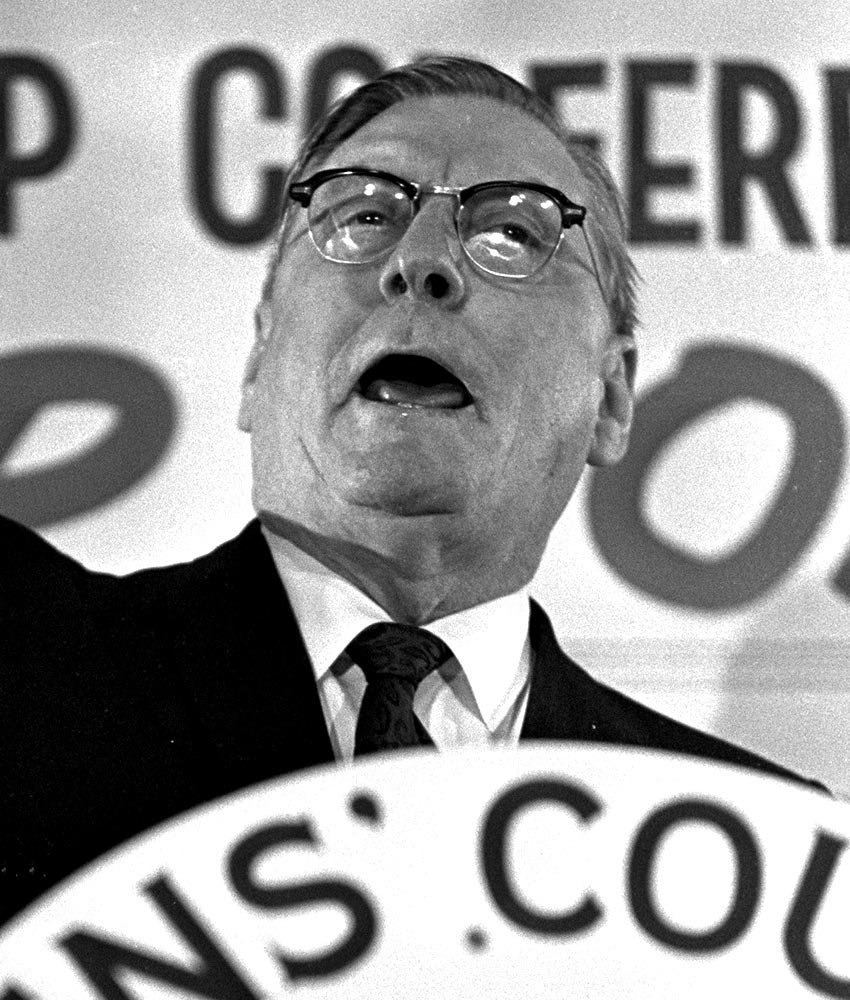
Ross Barnett
(1898-1987) Governor - Mississippi
There is no case in history where the Caucasian race has survived social integration. We will not drink from the cup of genocide.
Ross Barnett, a prominent segregationist and governor of Mississippi from 1959 to 1964, campaigned as a defender of white supremacy and declared, “The Negro is different because God made him different to punish him.” Barnett used state funds to support the segregationist White Citizens’ Councils, actively sought to arrest and jail Freedom Rider activists protesting illegal discrimination, and denounced constituents who asked federal agents to investigate a lynching.
Barnett is best remembered for attempting to stop a 29-year-old Black Air Force veteran named James Meredith from enrolling at the all-white University of Mississippi after Meredith won a federal lawsuit challenging segregation at Ole Miss. In 1962, on the day U.S. Marshals were to escort Meredith to campus, Barnett warned a segregationist crowd nearby that Ole Miss was “ready to be invaded” and issued “a call to arms.” The mob flooded the campus in violent riots that left two people dead and injured hundreds before they were quelled by federalized National Guard troops. The federal court held Barnett in contempt and imposed a large fine and jail sentence, but these penalties were never enforced and the charges were dropped in 1965. Reflecting on his role years later, Barnett said, “Generally speaking, I’d do the same things again.”
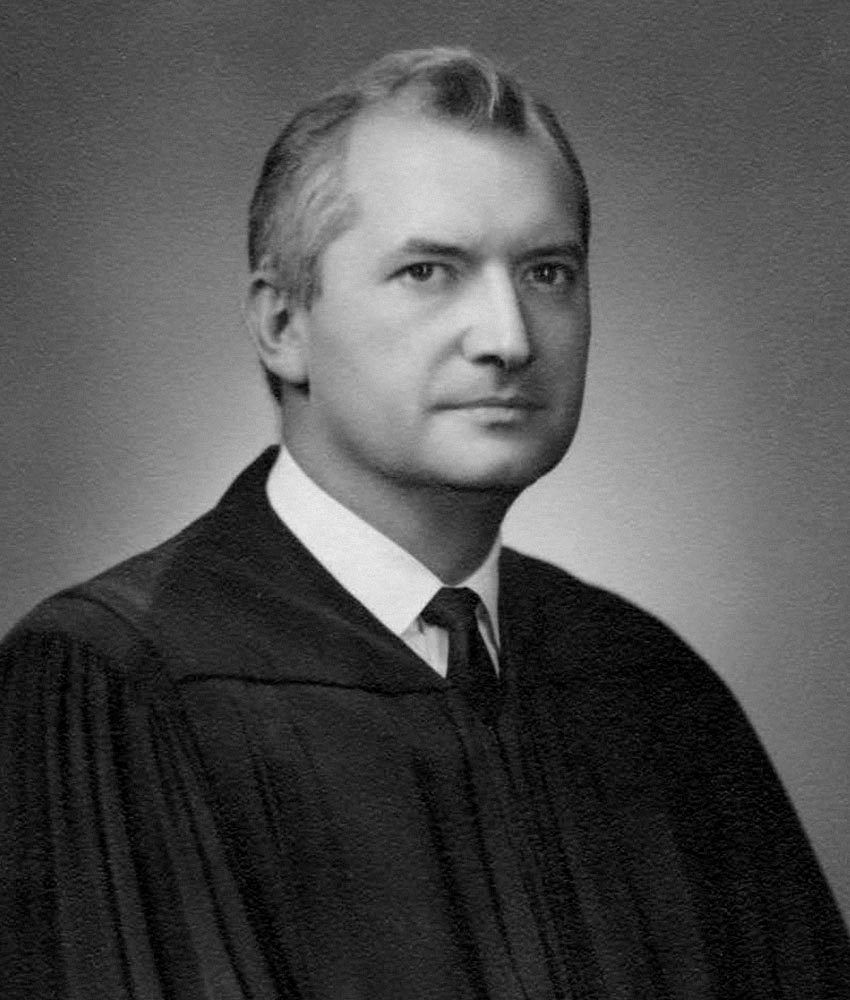
Jim Johnson
(1924-2010) State Senator, State Supreme Court Justice - Arkansas
I don’t care how many court rulings are handed down or how many troops are sent into our state. We shall not surrender our sovereign rights and reserved powers to govern and control our state institutions.
“Justice Jim” Johnson was an outspoken segregationist who served as an Arkansas state senator and associate justice on the Arkansas Supreme Court in the 1950s and 1960s. After the Brown decision, Johnson launched a campaign to ensure that defense of segregation remained a central political platform in Arkansas. Johnson formed the White Citizens’ Council of Arkansas, which protested plans to integrate schools in the town of Hoxie and proposed an amendment to the Arkansas Constitution that would authorize state officials to ignore federal law. (Voters passed the proposal, but it was later struck down as unconstitutional.) In 1956, Johnson challenged incumbent Orval Faubus and ran for governor on a segregationist platform with the endorsement of the KKK. Although Johnson lost the election, he leveraged his supporters to pressure Faubus to embrace the segregationist cause. He was instrumental in persuading Faubus to defy federal orders to desegregate Little Rock Central High School in 1957.

Herman Talmadge
(1913-2002) Governor, U.S. Senator - Georgia
There aren’t enough troops in the whole United States to make the white people of this state send their children to school with colored children.
The son of Georgia Governor Eugene Talmadge, Herman Talmadge carried on the segregationist cause after his father died. During his 1948 gubernatorial campaign, Talmadge sought to disenfranchise as many African Americans as possible and told party leaders, “If we can’t have a white primary, we want as white a one as we can get.” As governor, Talmadge advocated for segregationist and racist policies, often framed as “states’ rights” issues, which had become a popular segregationist tactic. Talmadge appointed Klan members to public office, including Samuel Green, Grand Dragon of Georgia’s KKK, as Lieutenant Colonel and Aide-de-Camp, and Klansmen Sam Robert as head of the State Bureau of Investigation. Following Brown, Talmadge vehemently opposed integration, ominously warning that “blood will run in the streets of Atlanta” and declaring, “We intend to maintain separate schools in Georgia one way or another, come what may.”
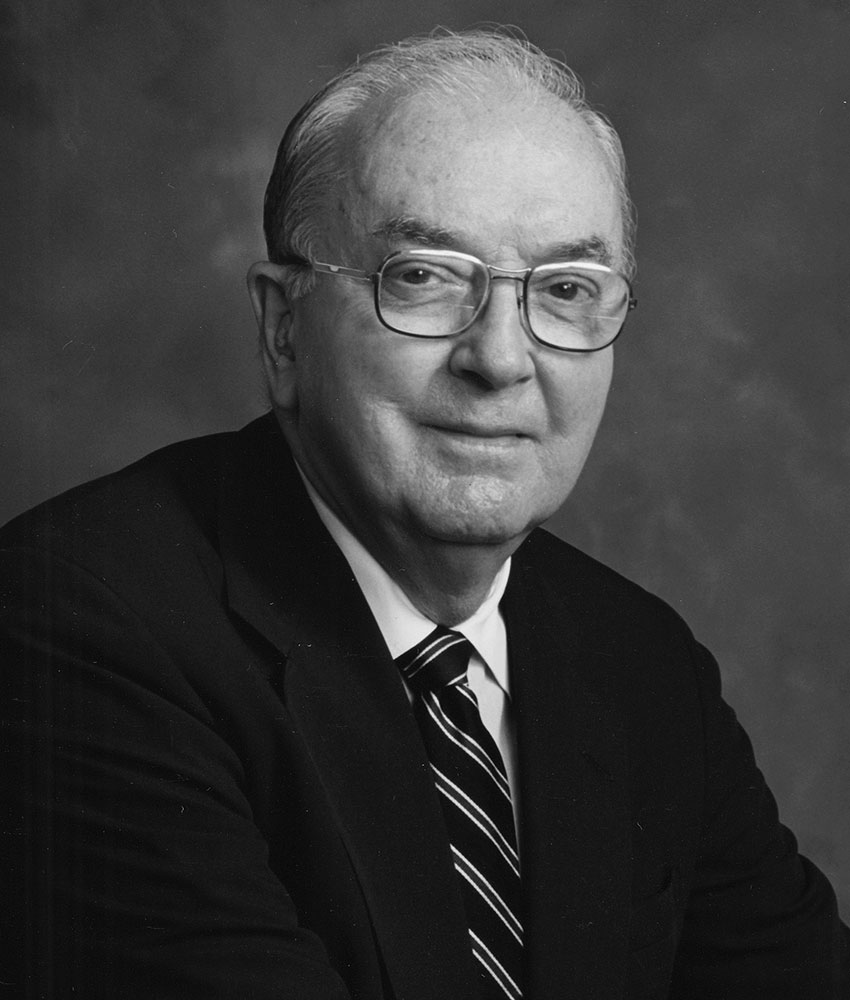
Jesse Helms
(1921-2008) U.S. Senator - North Carolina
The Negro cannot count forever on the kind of restraint that’s thus far left him free to clog the streets, disrupt traffic, and interfere with other men’s rights.
From 1973 to 2003, Jesse Helms represented North Carolina in the U.S. Senate, where he established himself as a seminal leader of the segregationist movement. Helms ran heavily racialized campaigns, vehemently opposed civil rights legislation, including the Civil Rights Act of 1964, and condemned civil rights activism like the 1963 March on Washington. He appealed to racist sentiment to win elections throughout his career. In 1984, Helm overcame his opponent’s 20-point lead to win re-election by filibustering a bill to make Dr. Martin Luther King Jr.’s birthday a federal holiday and by distributing literature that denounced Black registration drives. Helms defeated a Black opponent in 1990 after running a campaign ad that showed white hands crumpling a rejection letter as a narrator said, “You needed that job and you were the best qualified. But they had to give it to a minority because of a racial quota.”
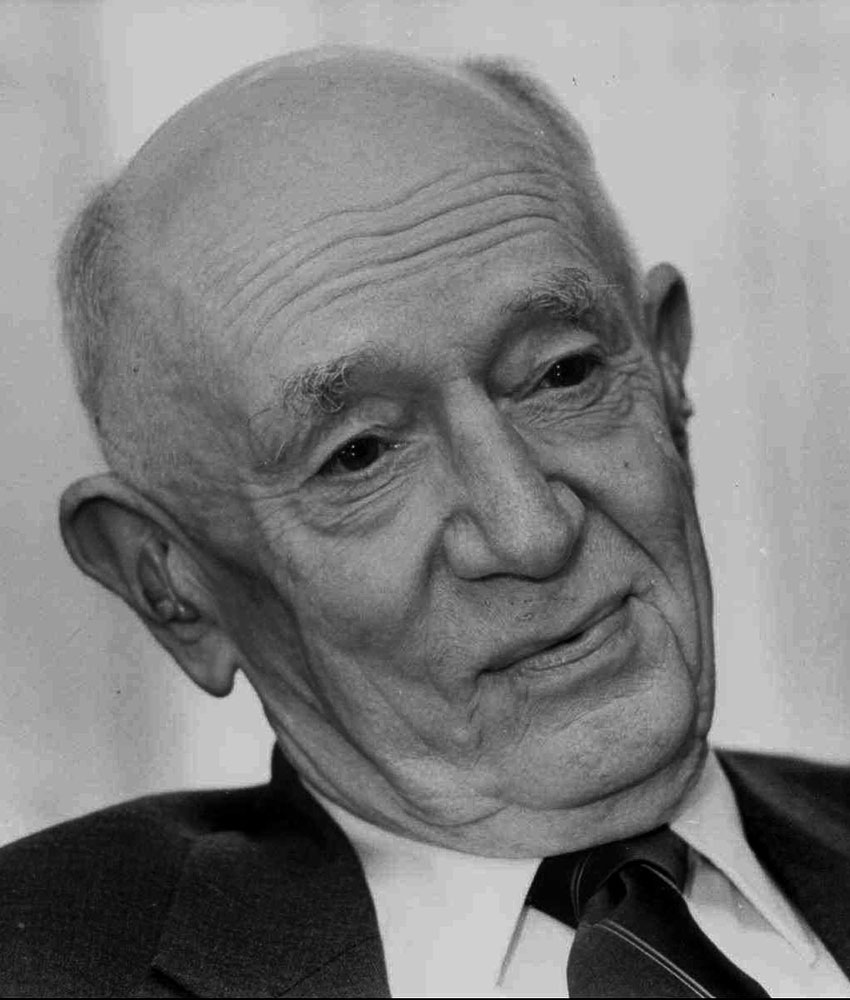
I. Beverly Lake
(1906-1996) State Supreme Court Justice - North Carolina
If we must choose between a generation of inferior education and the amalgamation of our races into a mix-blooded whole, let us choose inferior education since that is an evil which another generation can correct, while miscegenation is a tragedy which can never be undone.
Isaac “I.” Beverly Lake was a prominent lawyer who fought school desegregation in North Carolina before joining the North Carolina Supreme Court. Lake unsuccessfully ran for governor in 1960 on a segregationist platform that publicly denounced “race-mixing.” He warned white families that integration would “destroy both their school system and their children’s pride in their racial heritage.” In 1957, Lake accused the NAACP of “trying to condition [white] children, even before they are old enough to be conscious of sex, to accept integration not only in the classroom, but in the living room and the bedroom as well.” As late as 1987, he declared it “a disgrace to have a state holiday for a man of deplorable character like Martin Luther King.” His portrait hangs in the North Carolina Supreme Court, and the North Carolina Bar Association and Wake Forest and Campbell University law schools give awards in his memory.
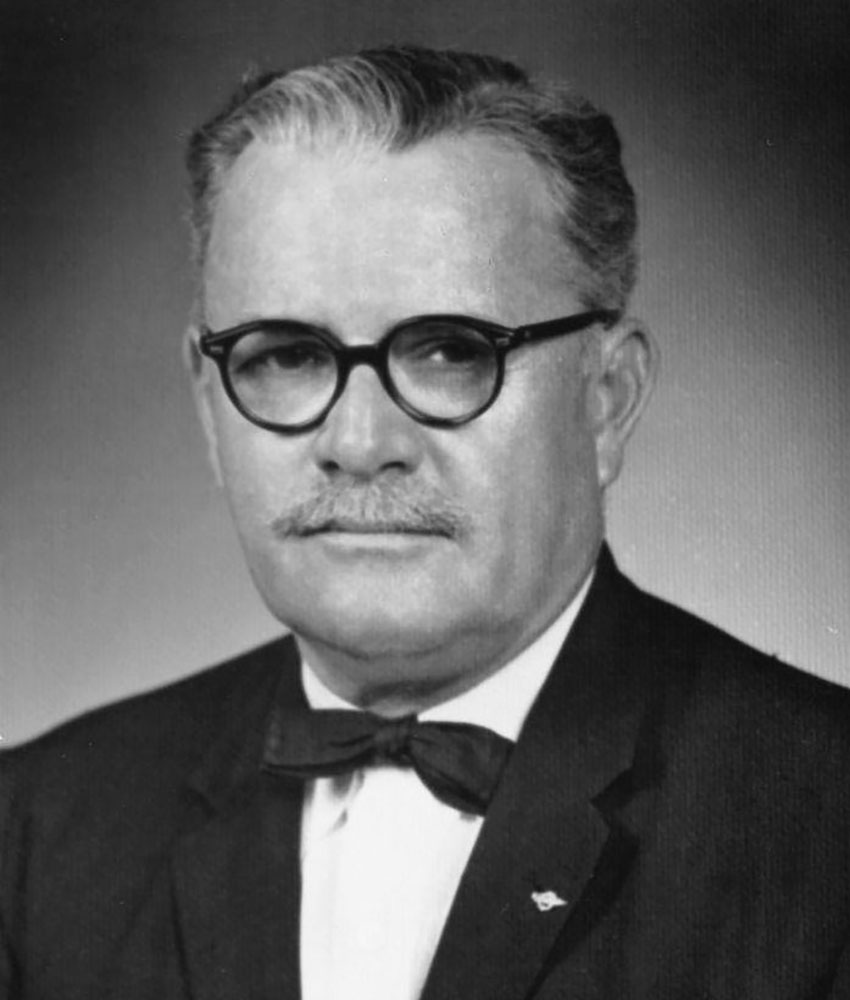
Thomas Pickens Brady
(1903-1973) State Supreme Court Justice - Mississippi
You can dress a chimpanzee, housebreak him, and teach him to use a knife and fork, but it will take countless generations of evolutionary development, if ever, before you can convince him that a caterpillar or a cockroach is not a delicacy. Likewise the social, political, economical, and religious preferences of the Negro remain close to the caterpillar and the cockroach…
Thomas Pickens Brady became a national figure after he publicly denounced civil rights and desegregation. A circuit court judge in Brookhaven, Mississippi, when Brown was decided, he attacked it as a “stereotyped psychological opinion,” denigrated the “bestiality” of African Americans, and implored white Southerners to choose “between segregation and amalgamation” in a speech called Black Monday that became the intellectual foundation for segregationist White Citizens’ Councils throughout the South. Council members resisted integration through political action and targeted African Americans with violence and economic intimidation. Brady was appointed to the Mississippi Supreme Court in 1963 and served on the Democratic National Committee from 1960 to 1964, in which capacity he advocated dissolving public schools to avoid integration.
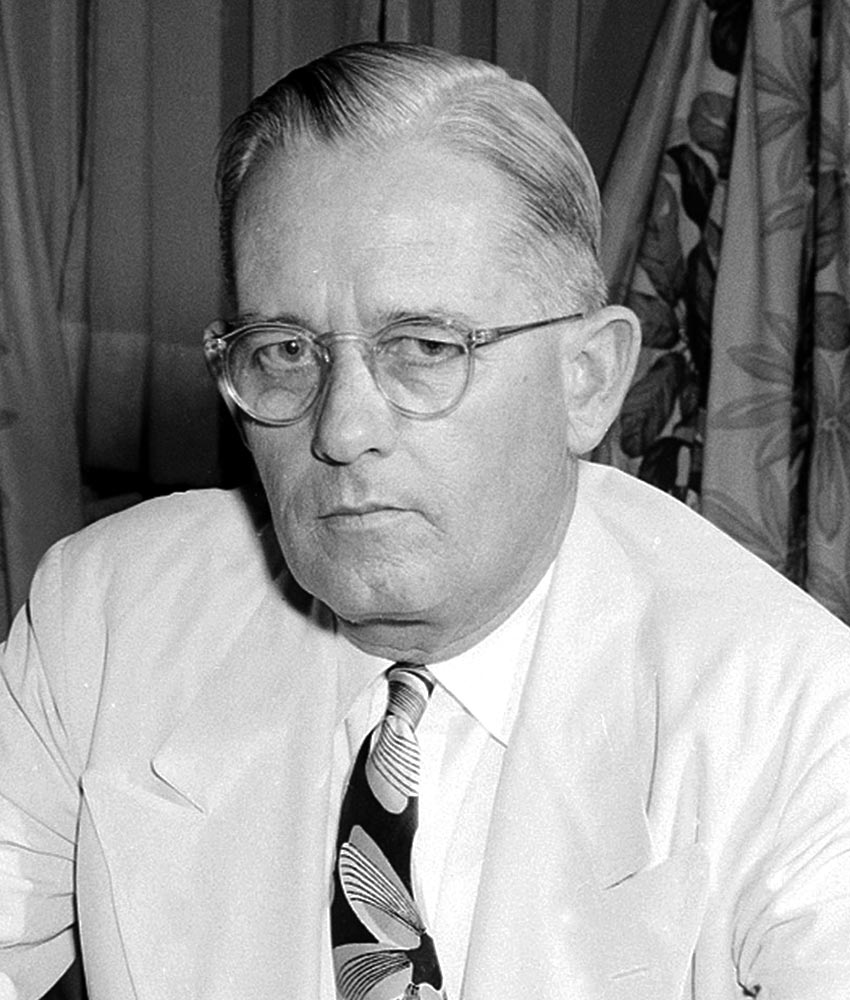
Fielding Wright
(1895-1956) Governor - Mississippi
If any of you [African Americans] have become so decided as to want to enter our white schools, patronize our hotels and cafes, enjoy social equality with the whites, then true kindness and sympathy requires me to advise you to make your homes in some other state.
Elected on the strength of his opposition to integration and civil rights, Fielding Wright was governor of Mississippi from 1946 to 1952. To avoid the Supreme Court’s ban on whites-only primary elections, Wright called a special session of the Mississippi Legislature to pass a bill that gave party leadership discretion to approve or disapprove primary voters. In his 1948 inaugural address, Wright called for the South to break from the Democratic Party unless it opposed President Harry Truman’s civil rights program. Wright helped establish the States’ Rights Democratic Party, the “Dixiecrats,” to flex Southern segregationists’ political clout and thwart challenges to white supremacy. In 1948, he ran for Vice President alongside Strom Thurmond on the Dixiecrat ticket, which won some 1.1 million votes. Several Mississippi institutions bear his name, including the Fielding L. Wright Art Center at Delta State University and the Fielding L. Wright Science Complex at Mississippi Valley State University.
Get Involved
Support the Equal Justice Initiative's movement to combat racial injustice in the United States.





